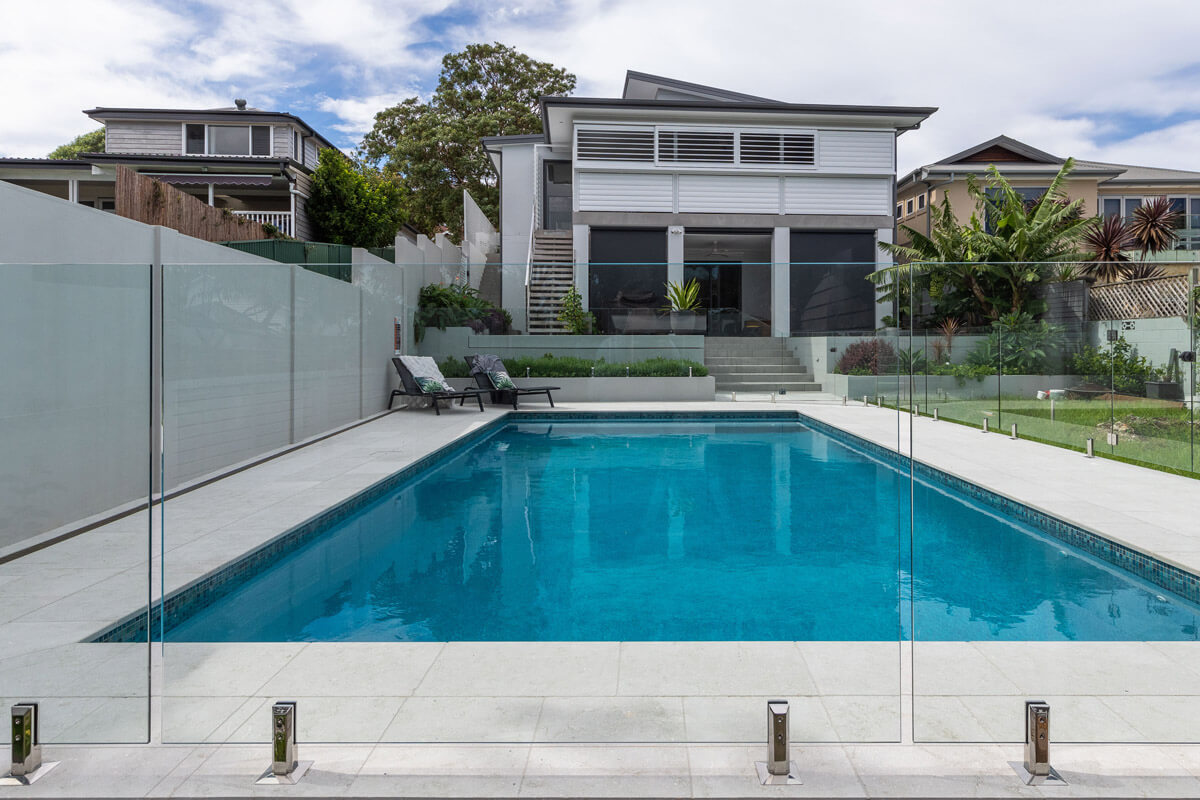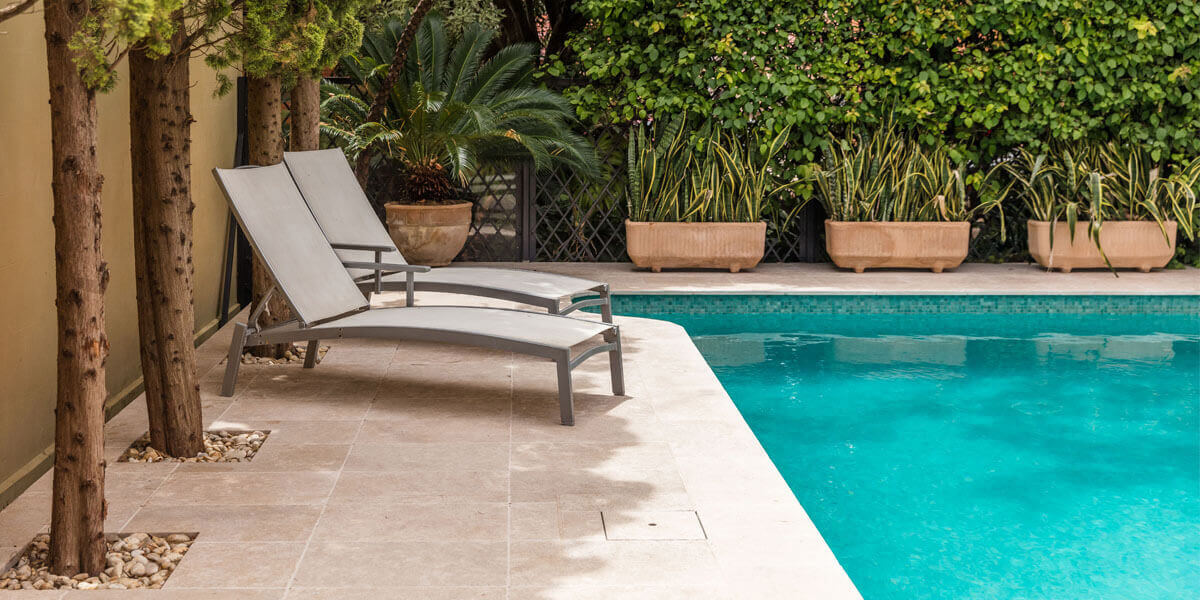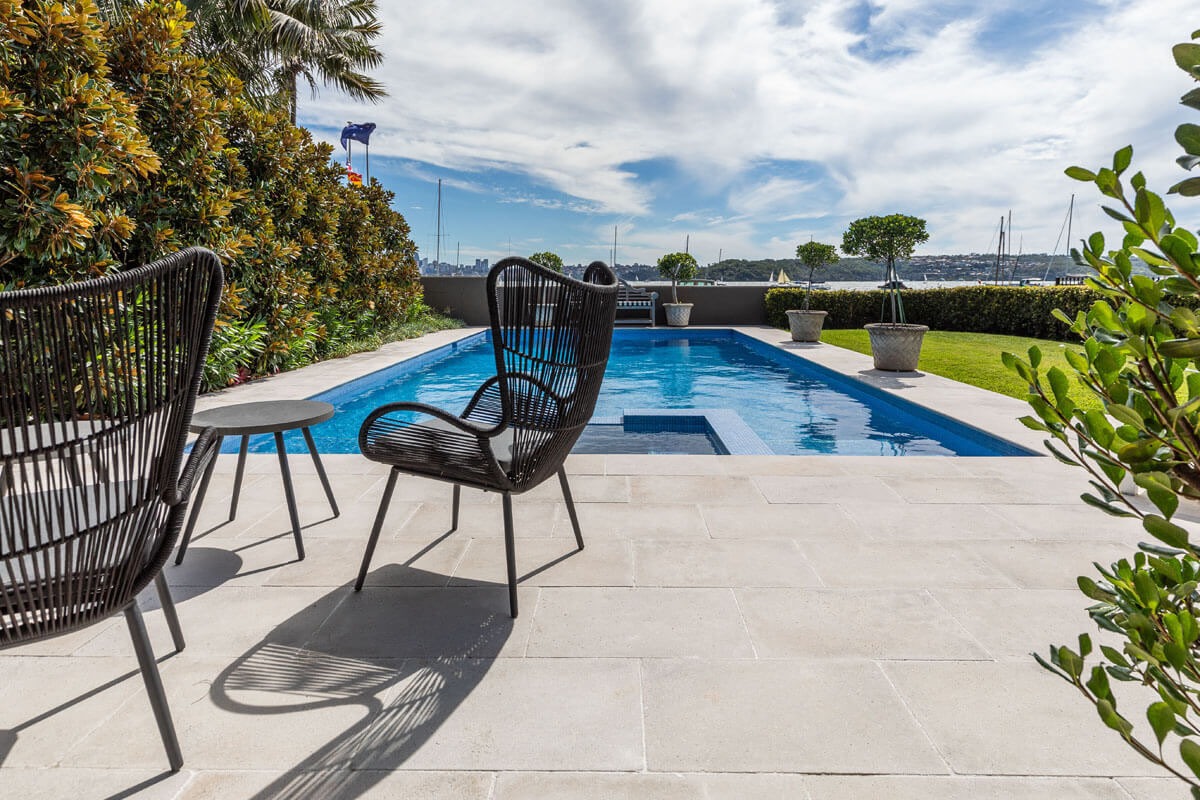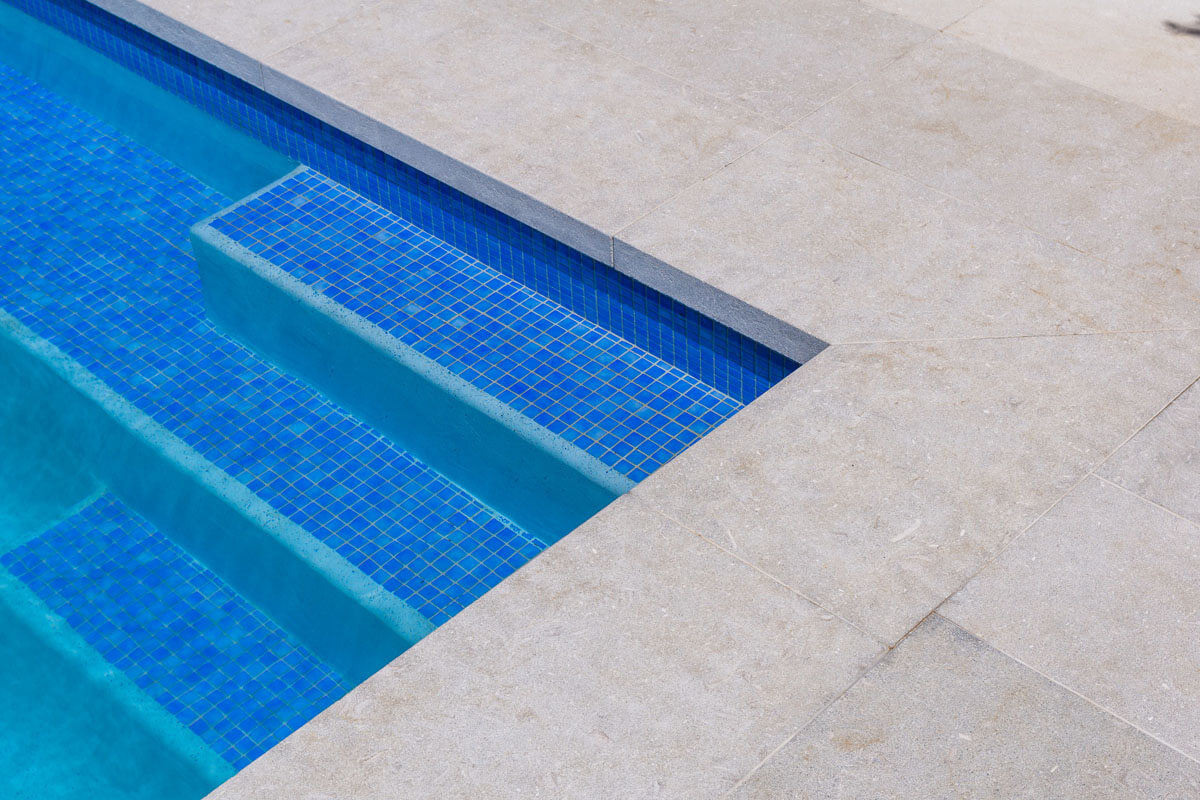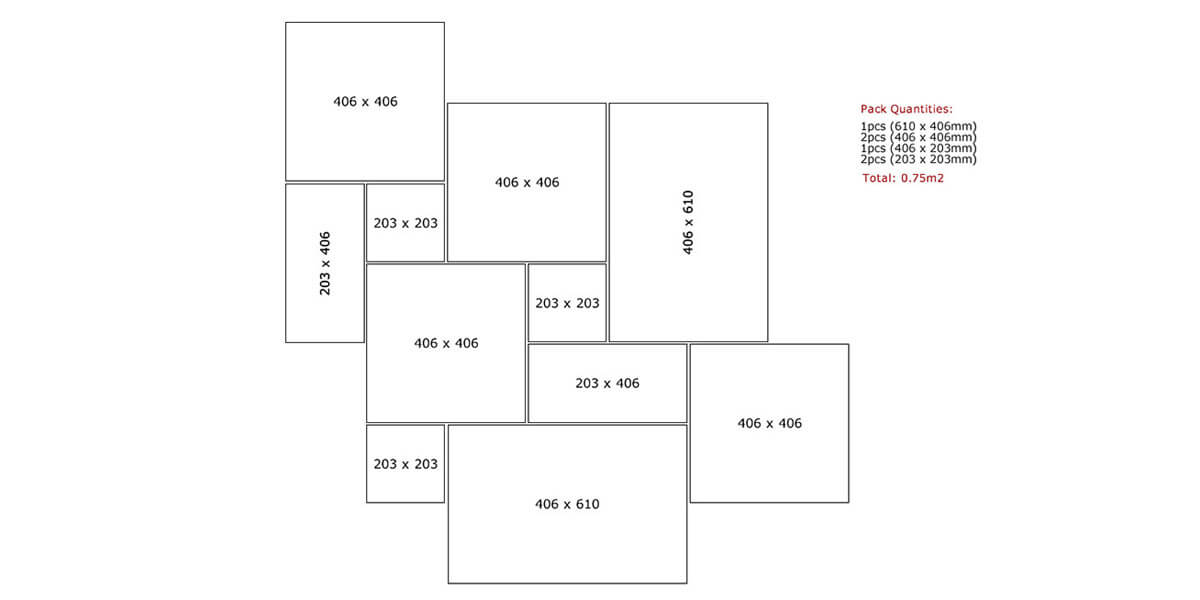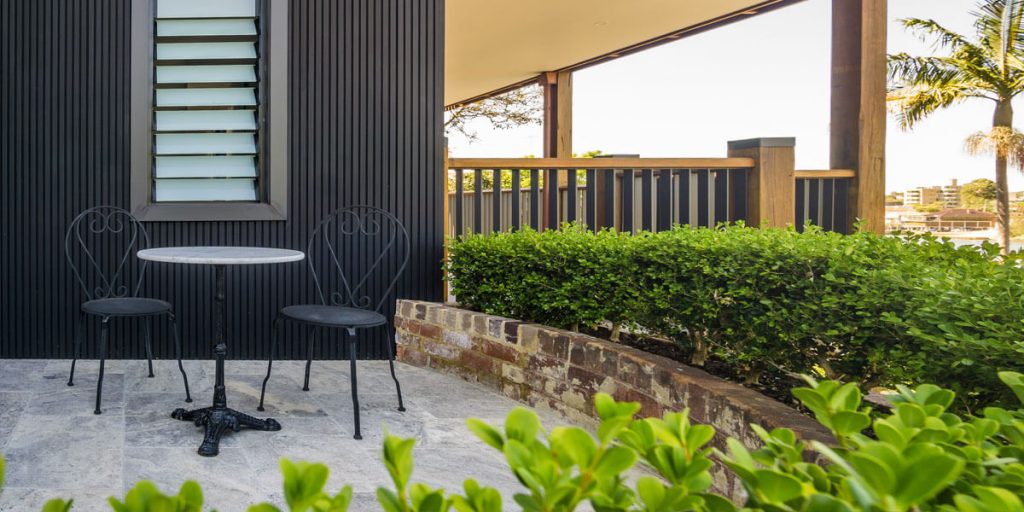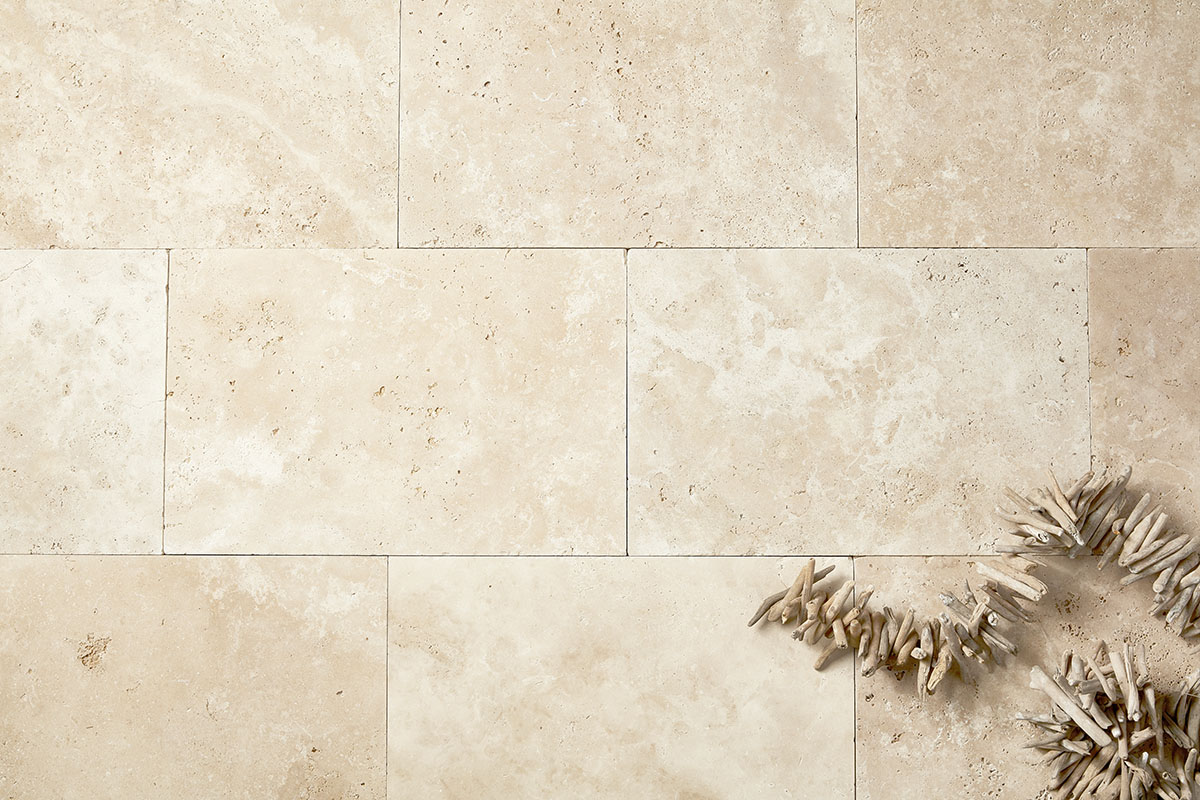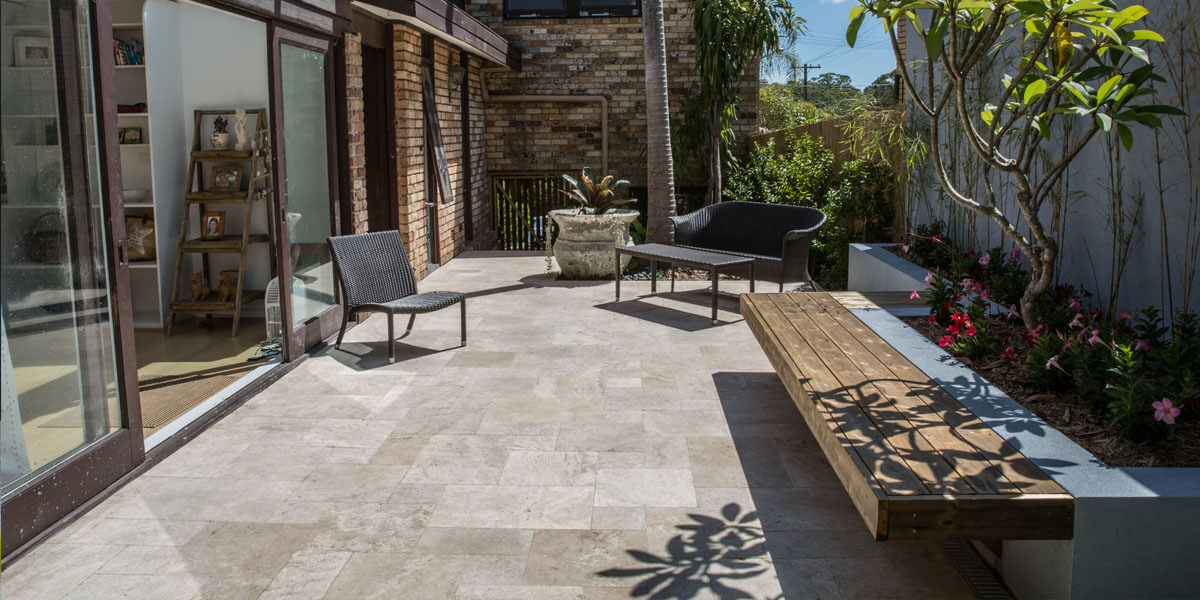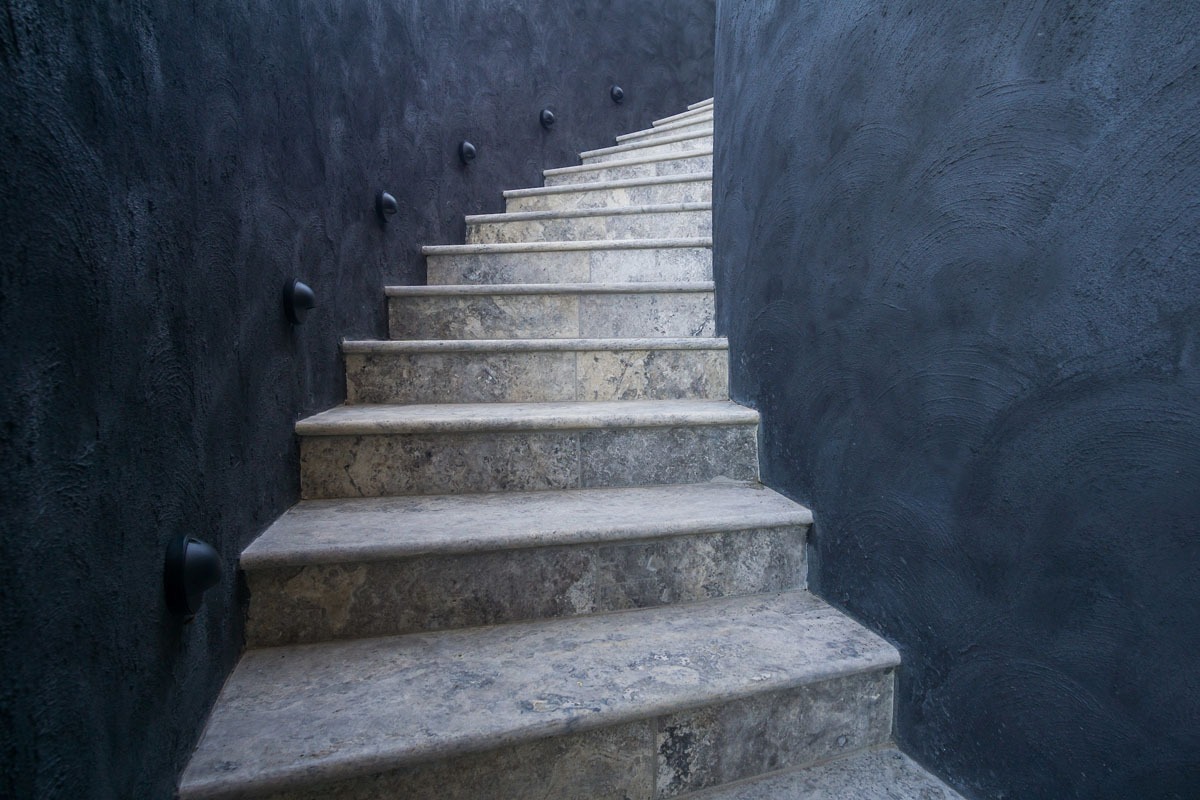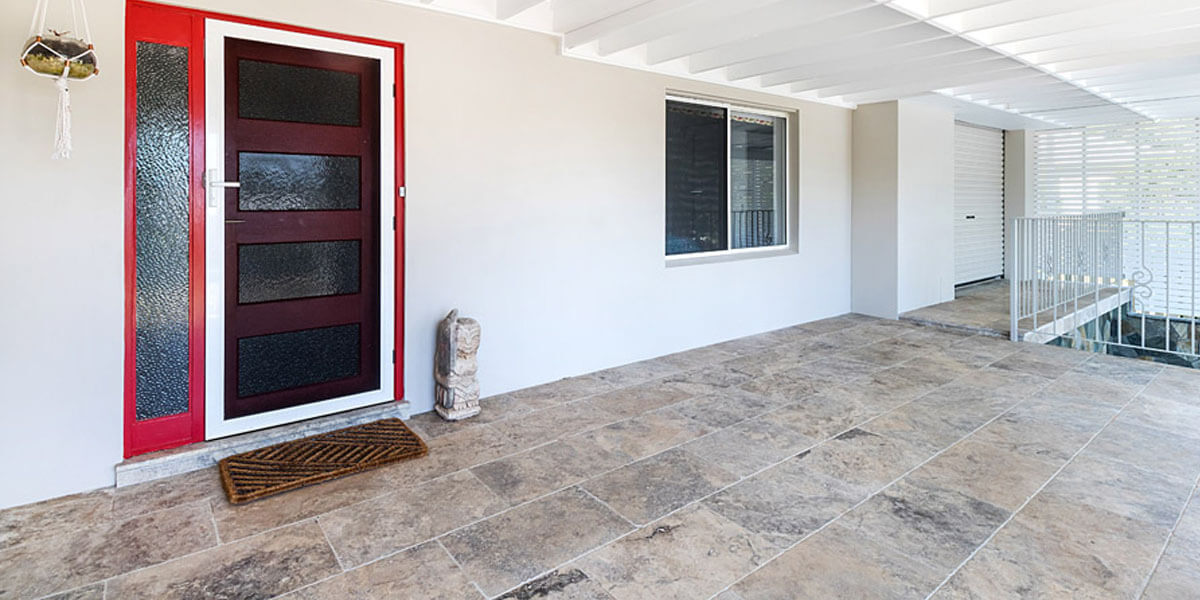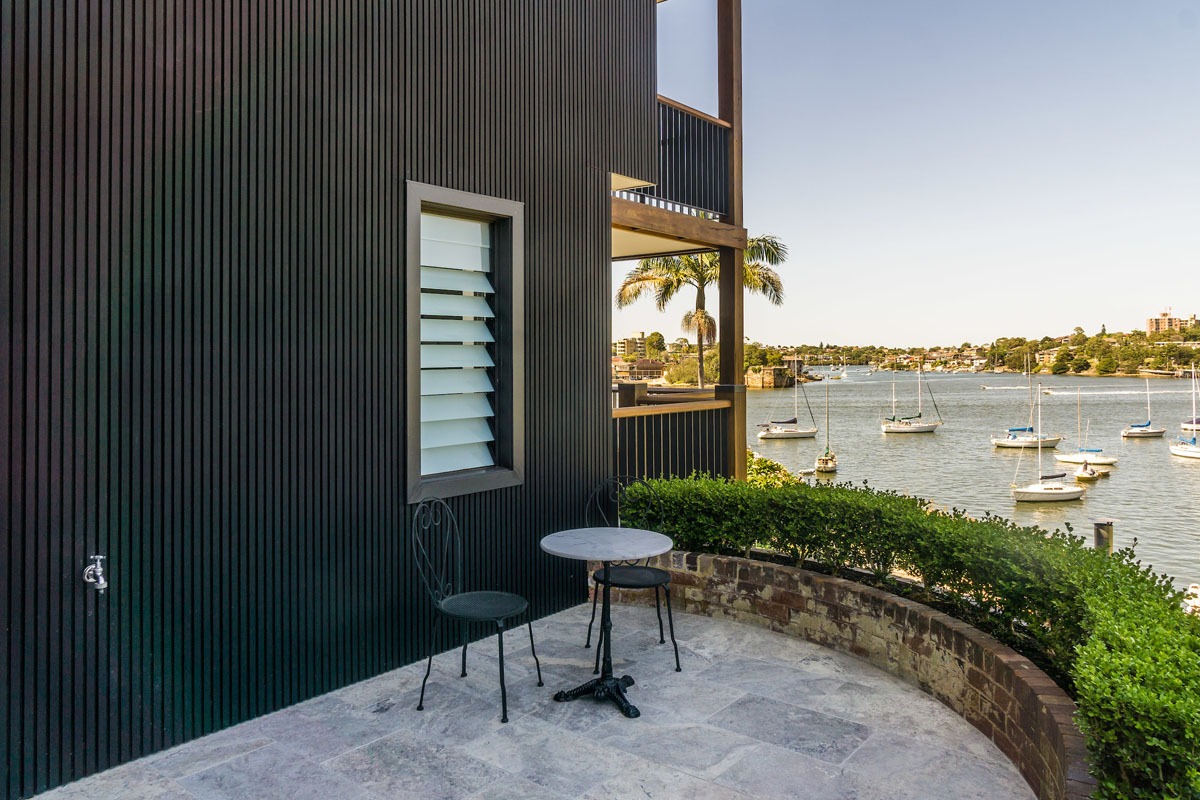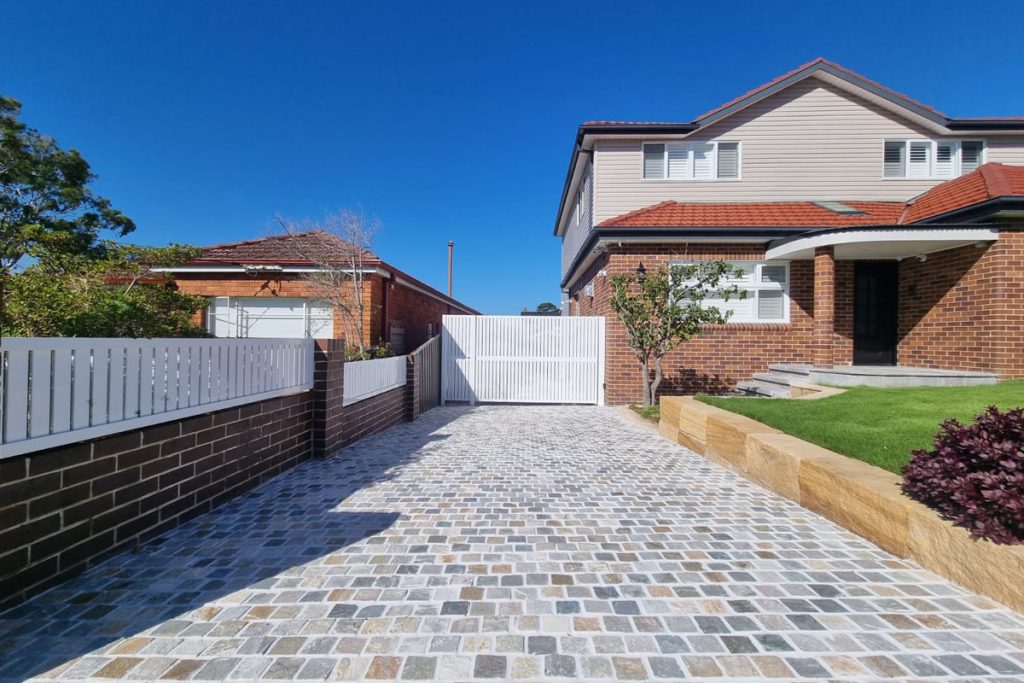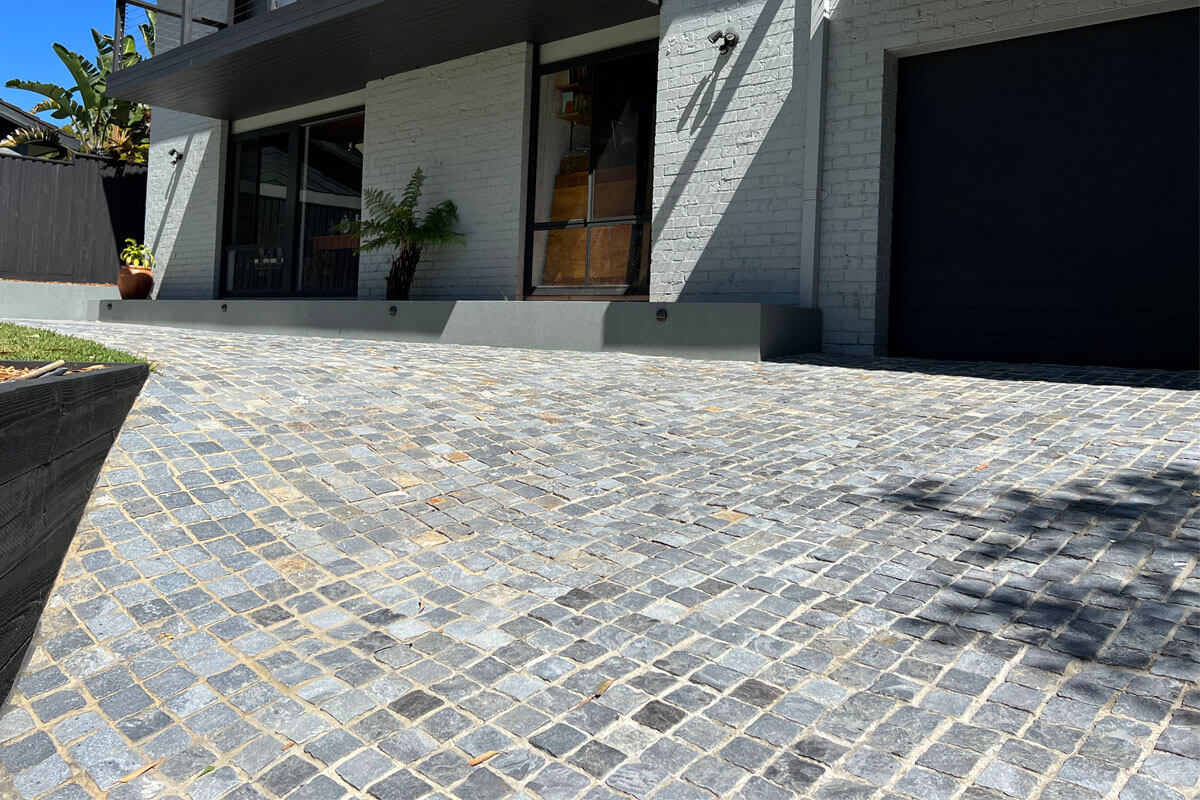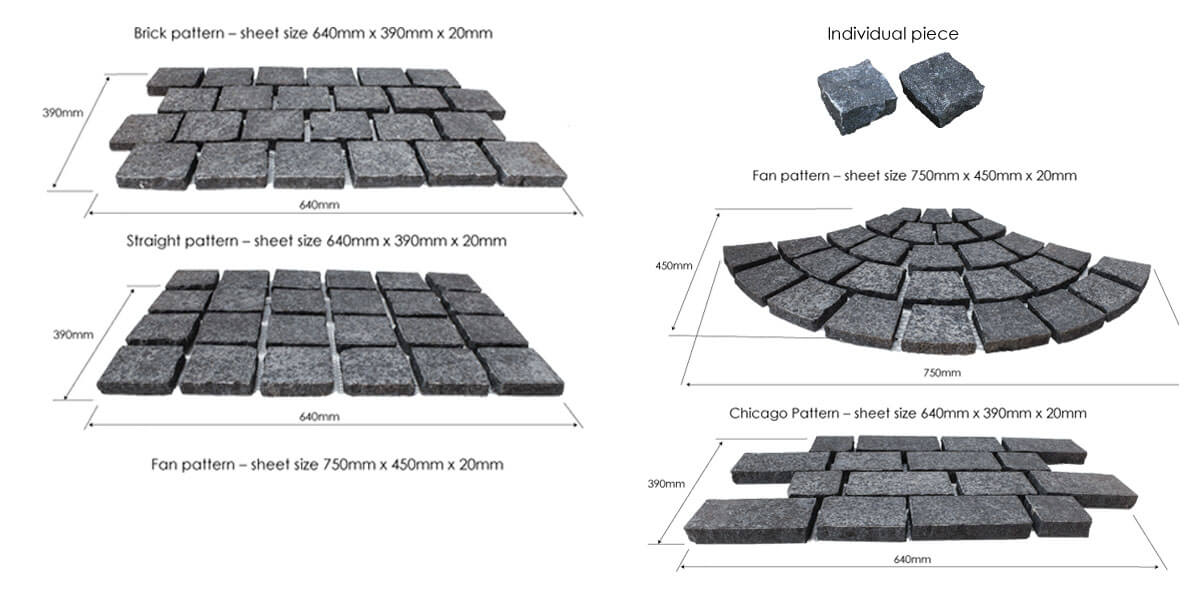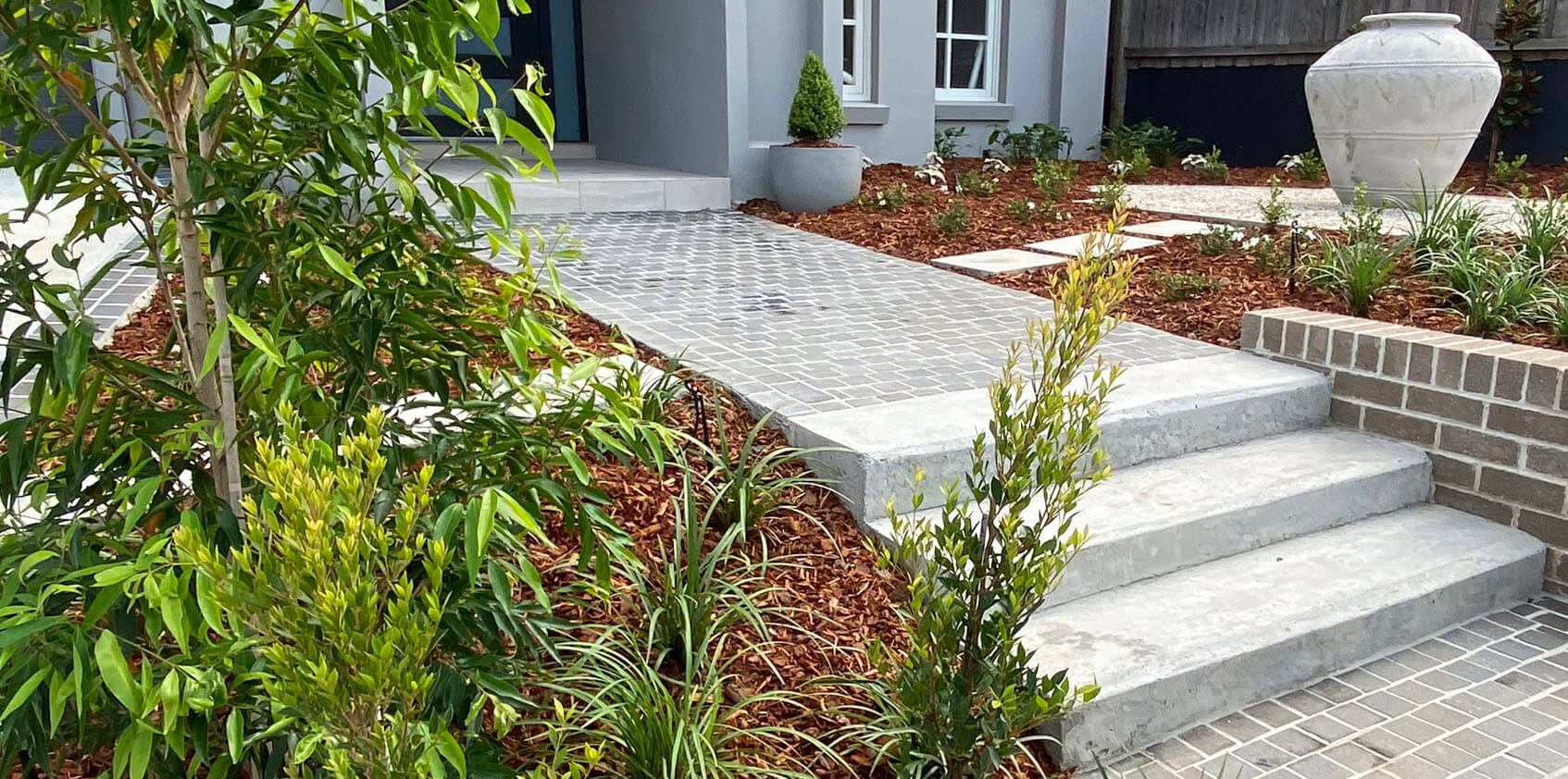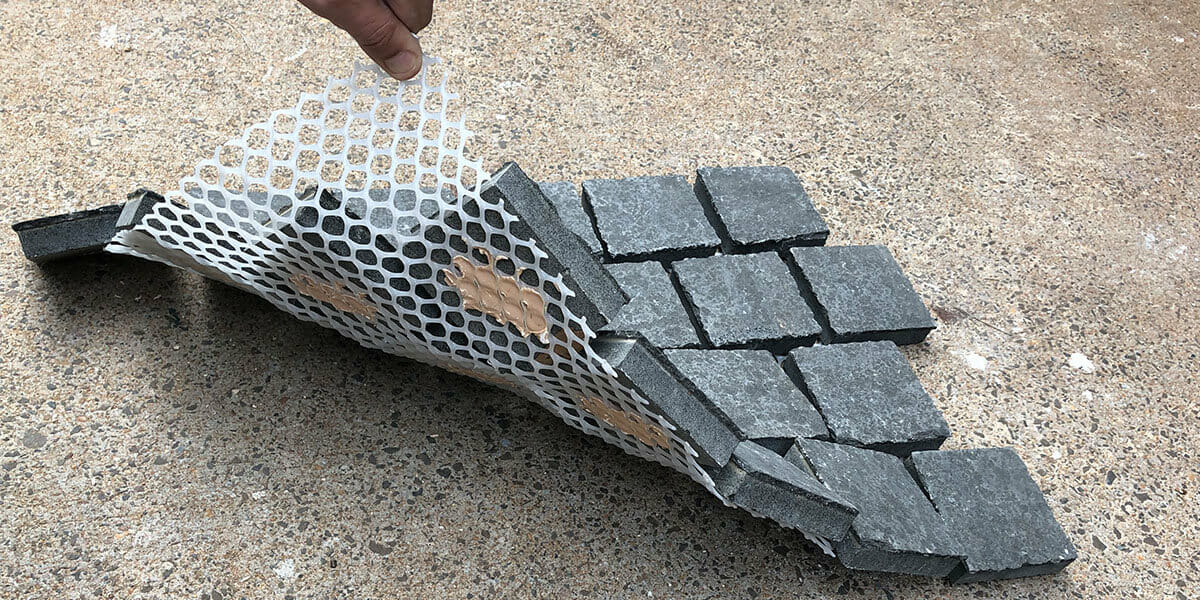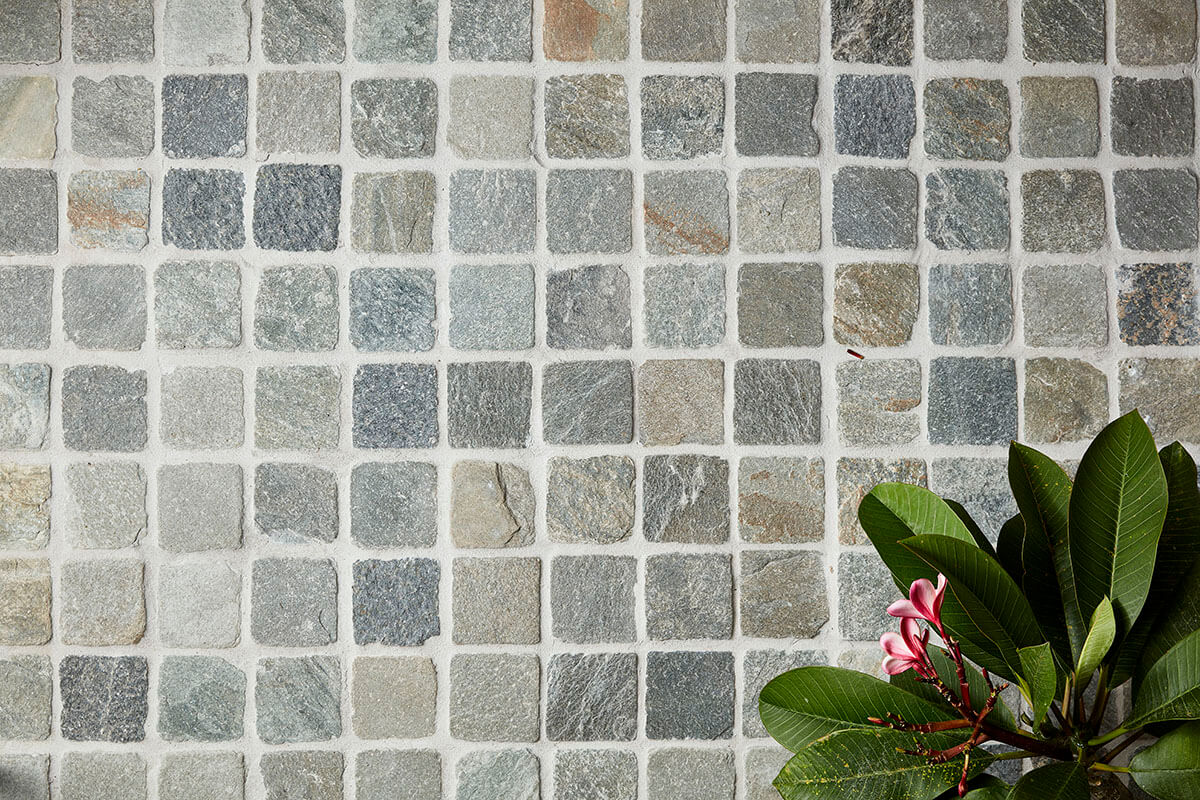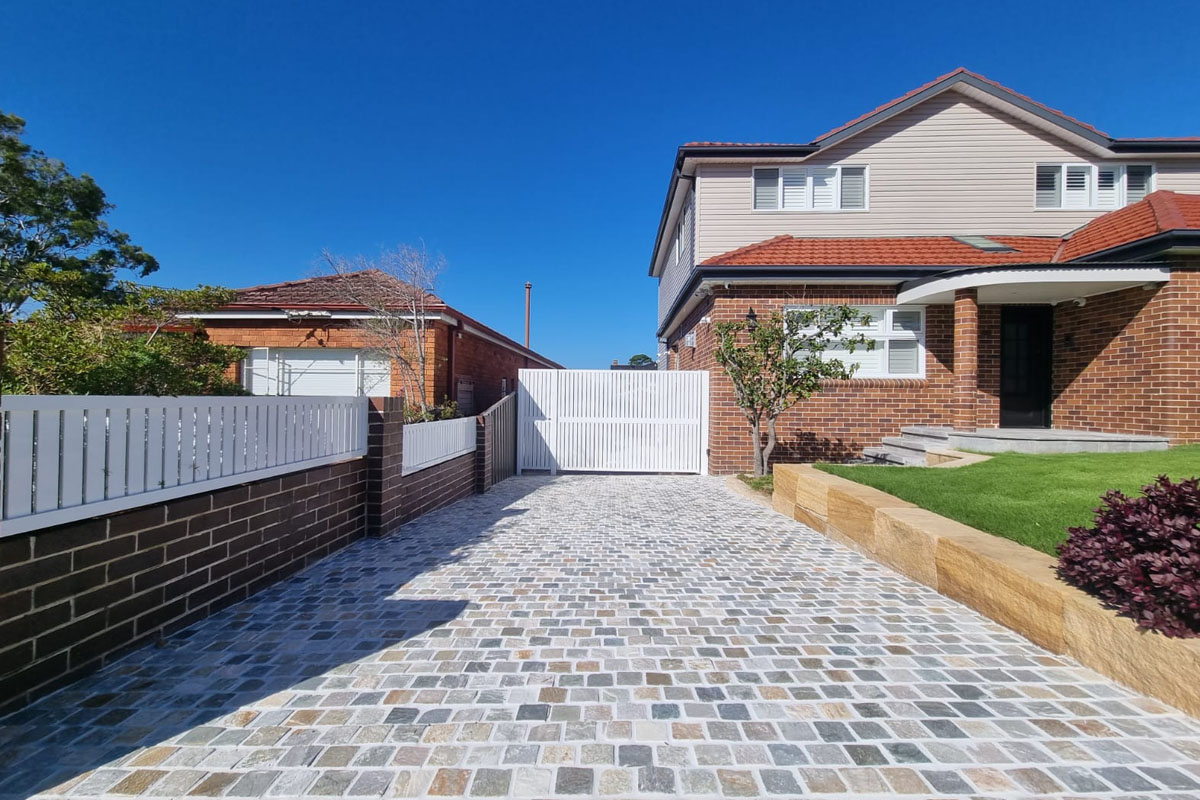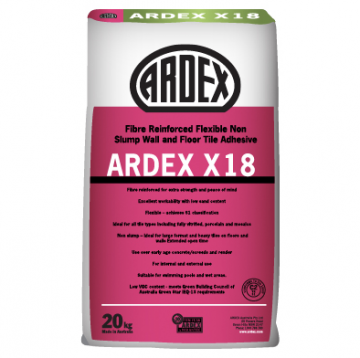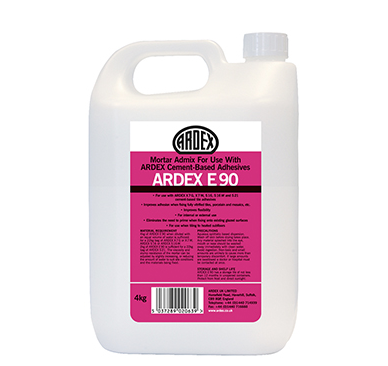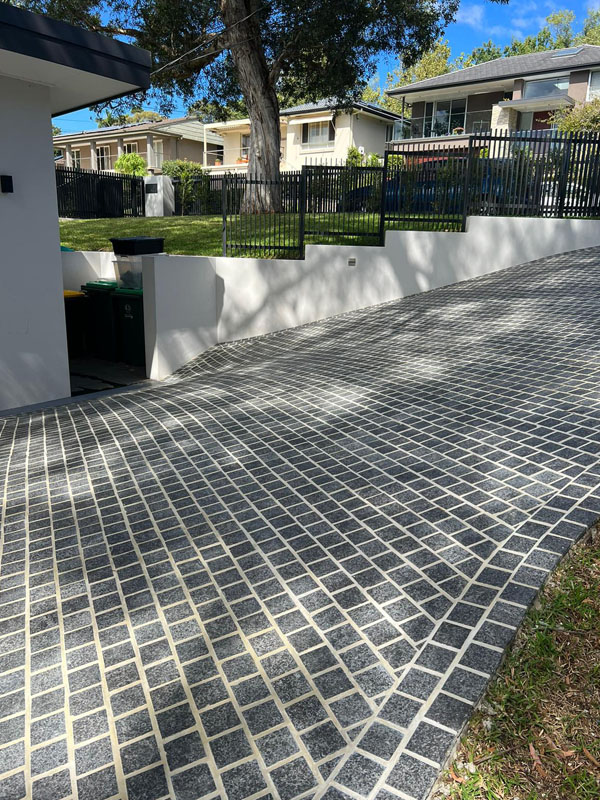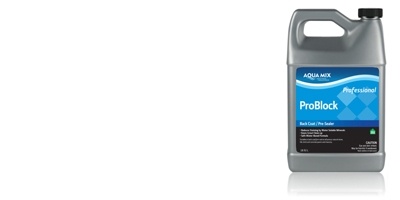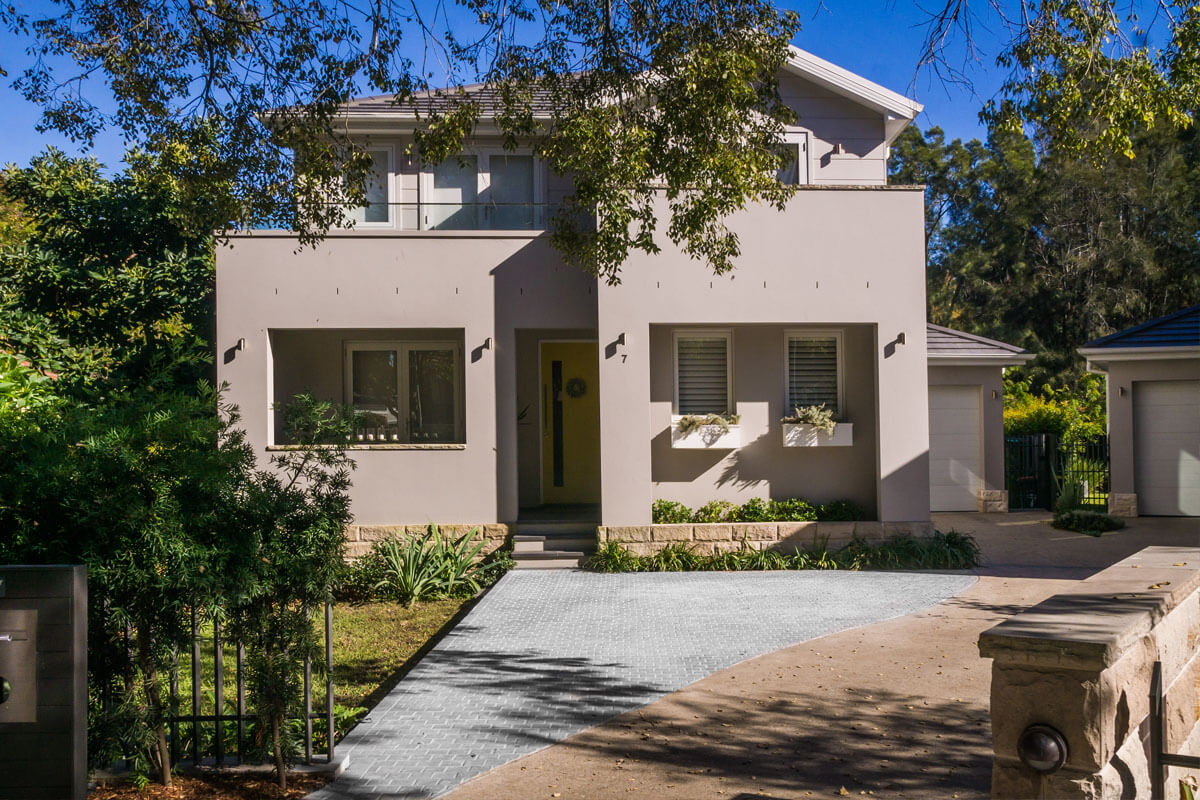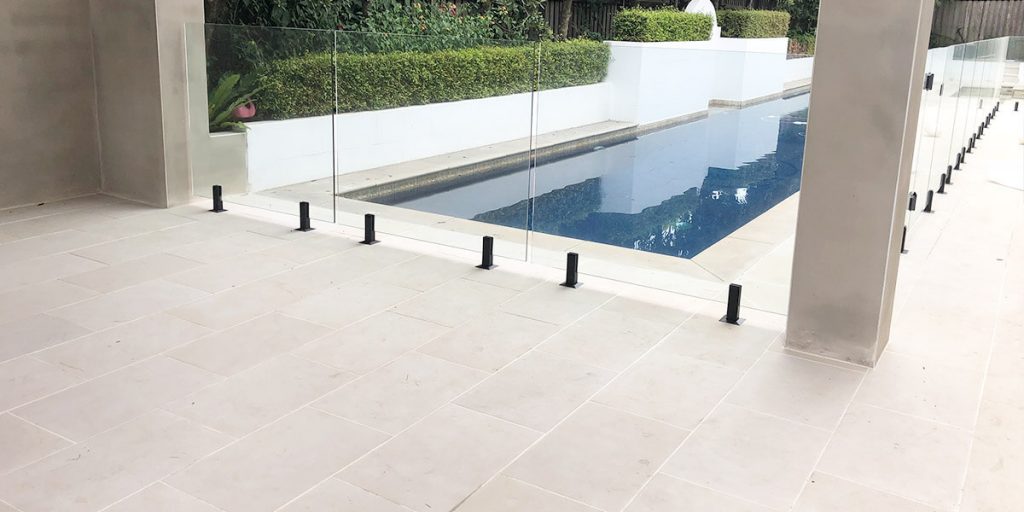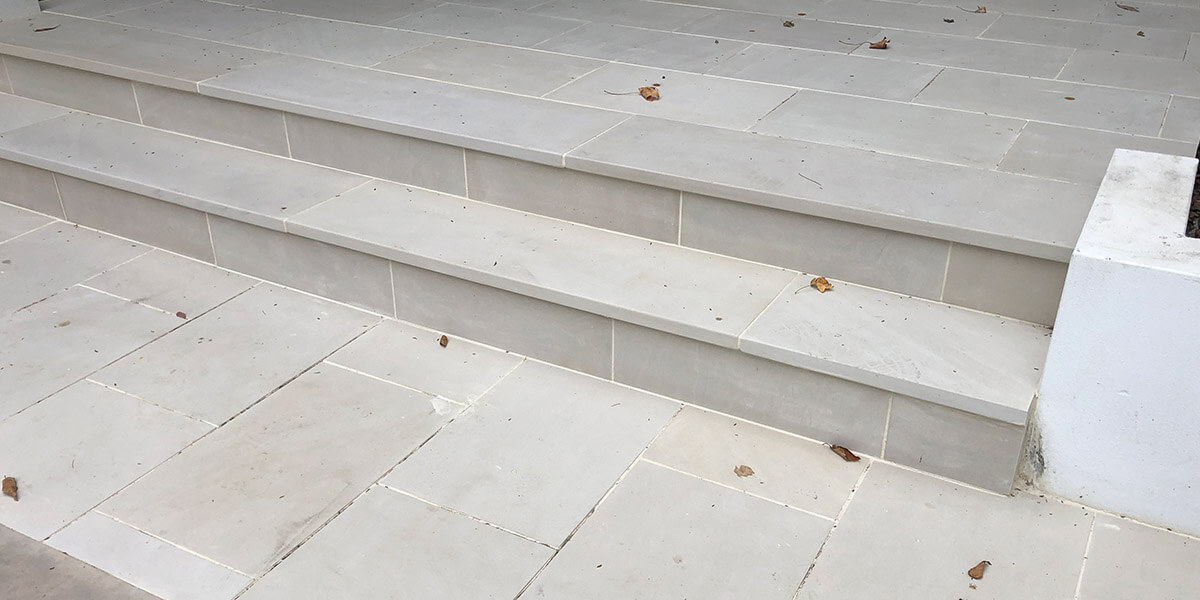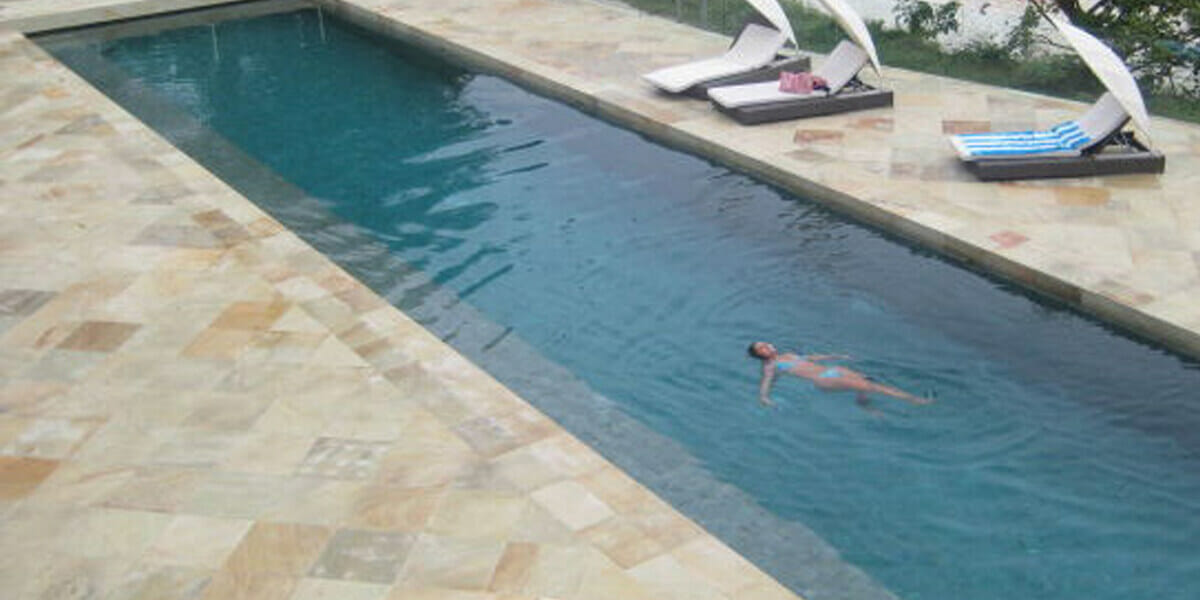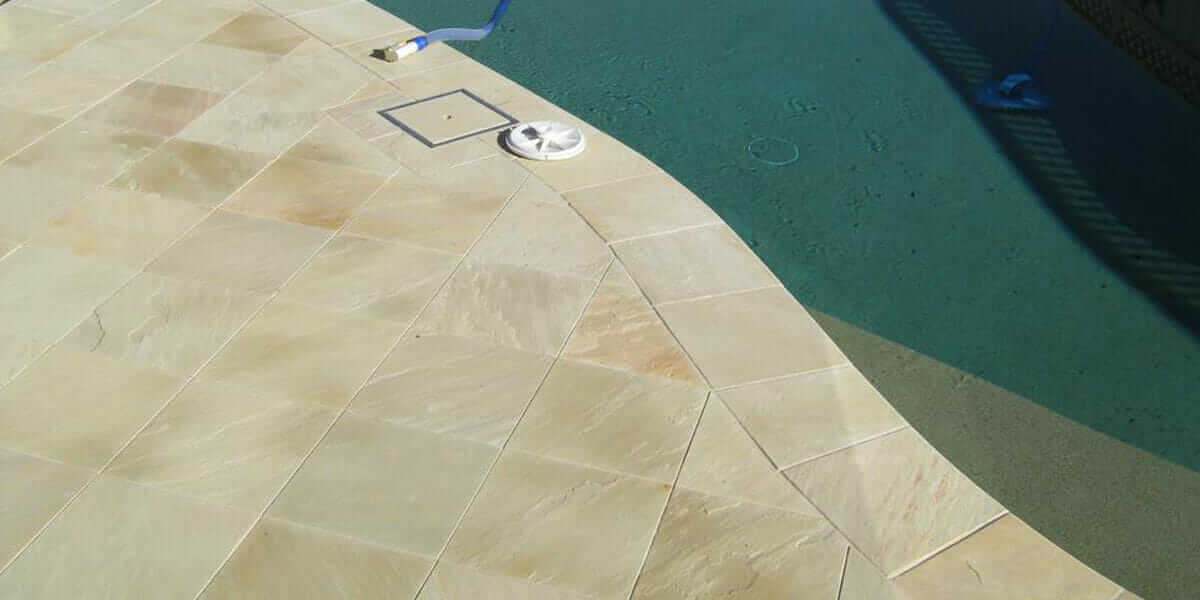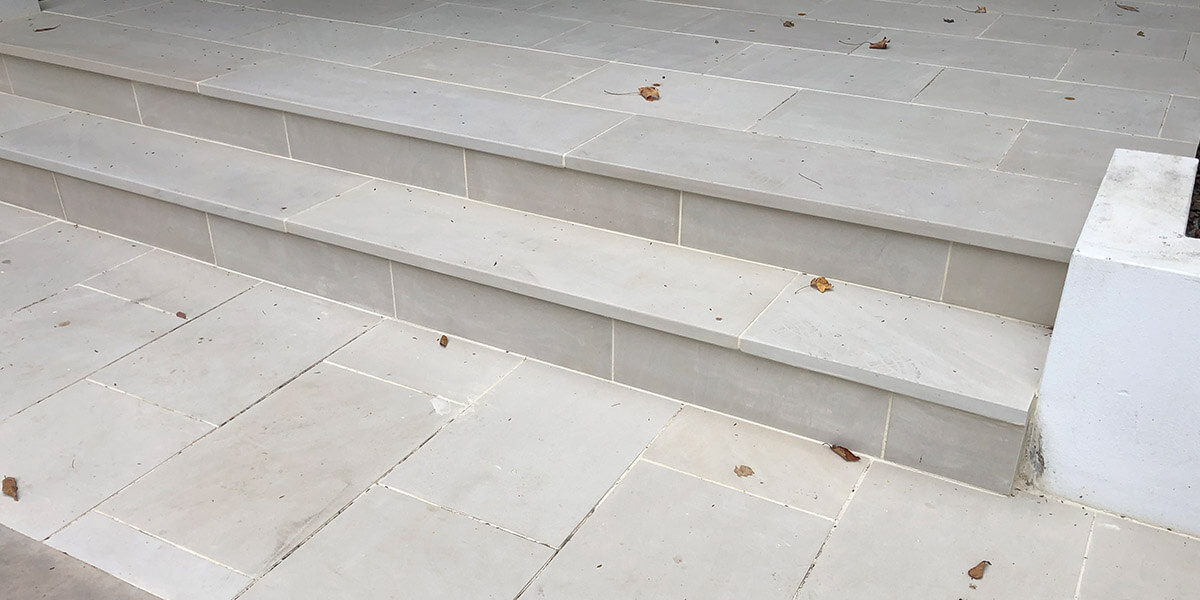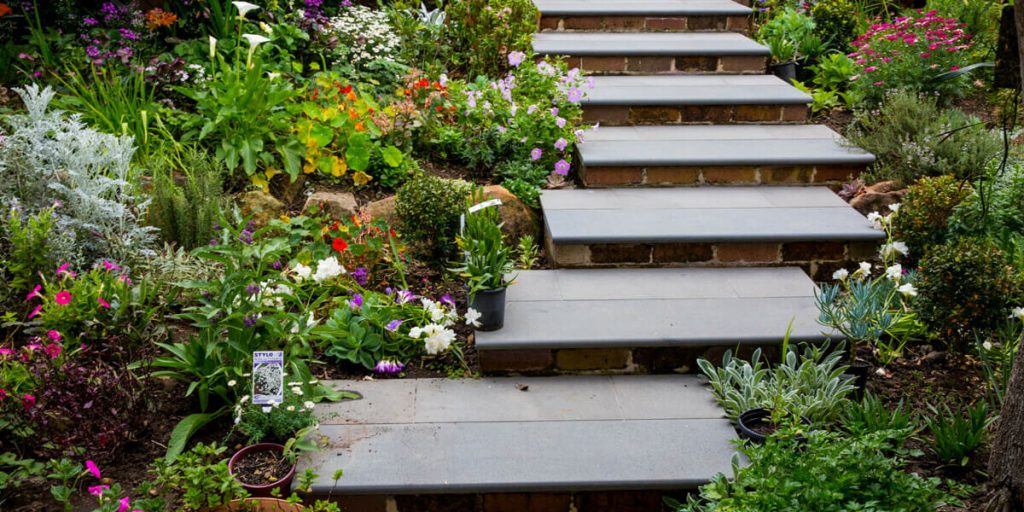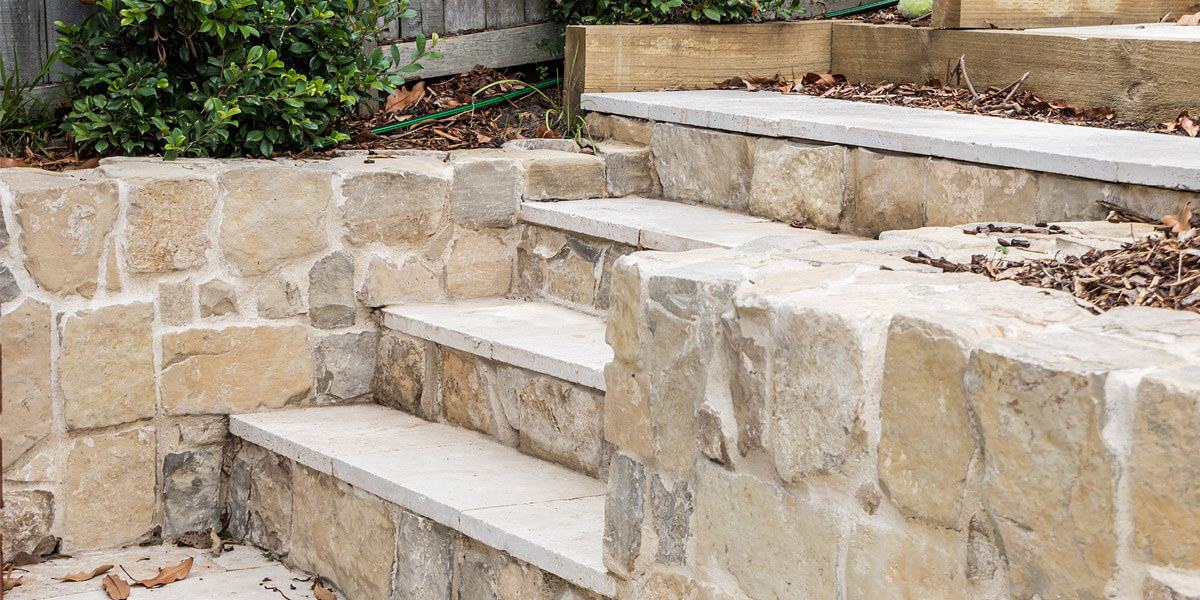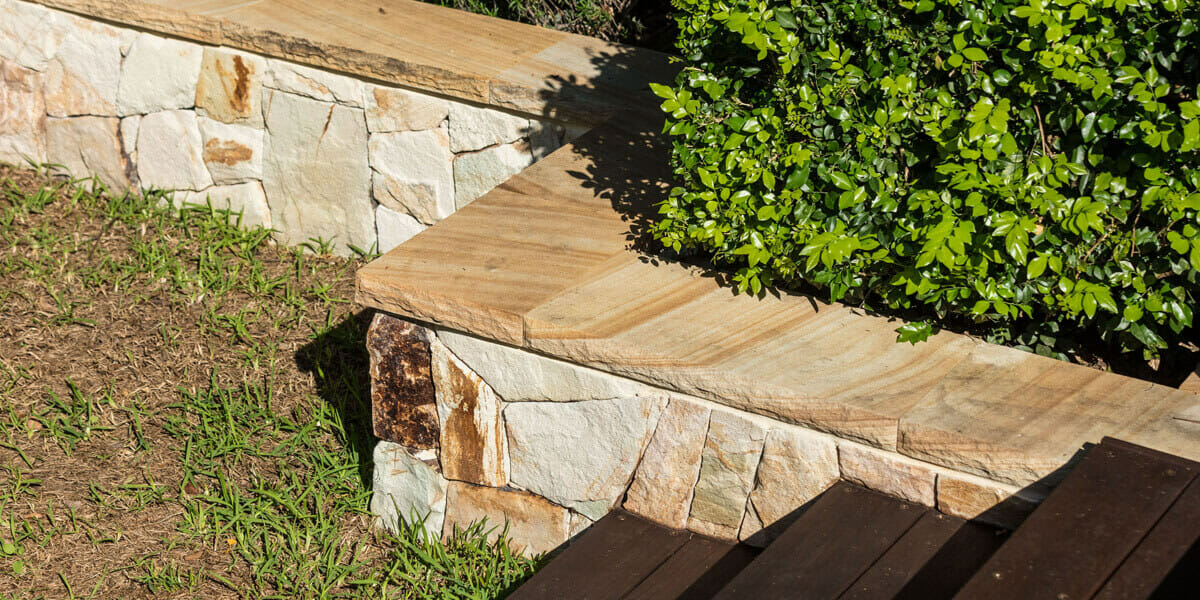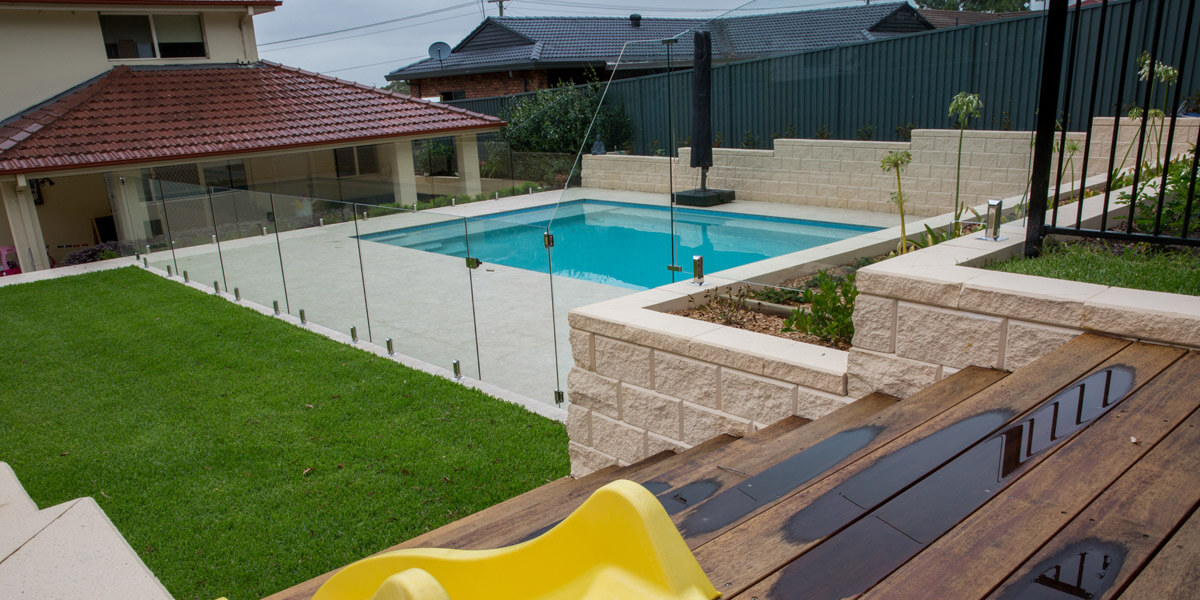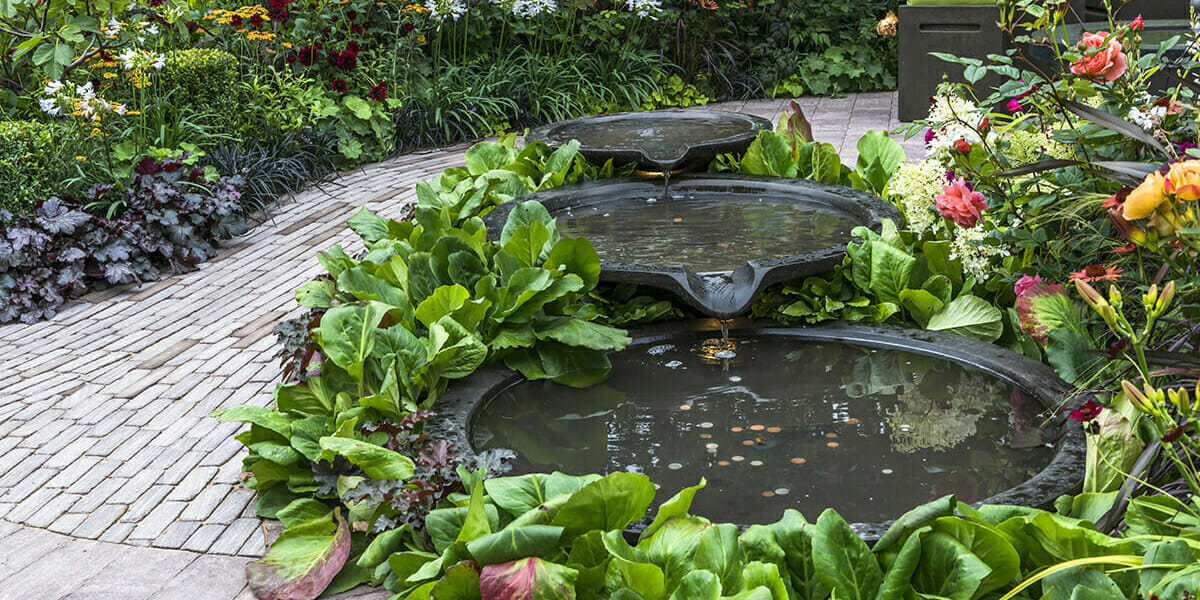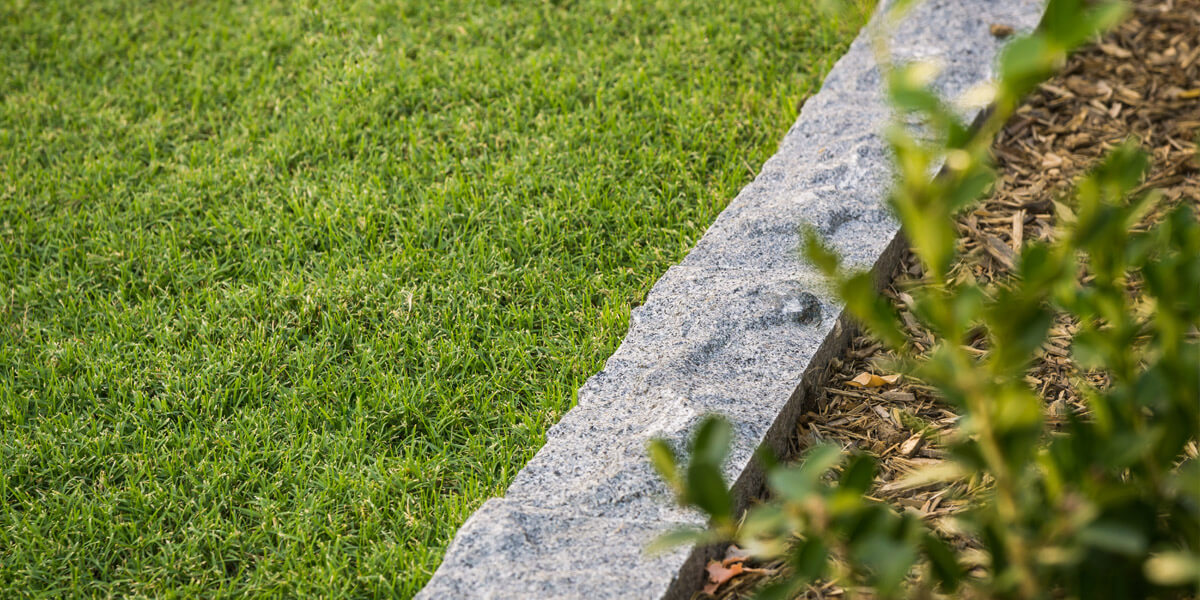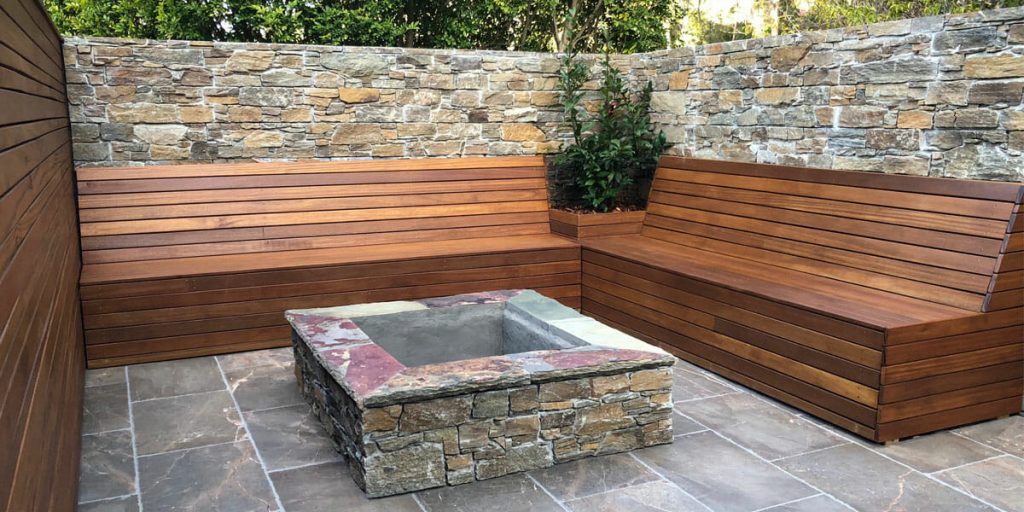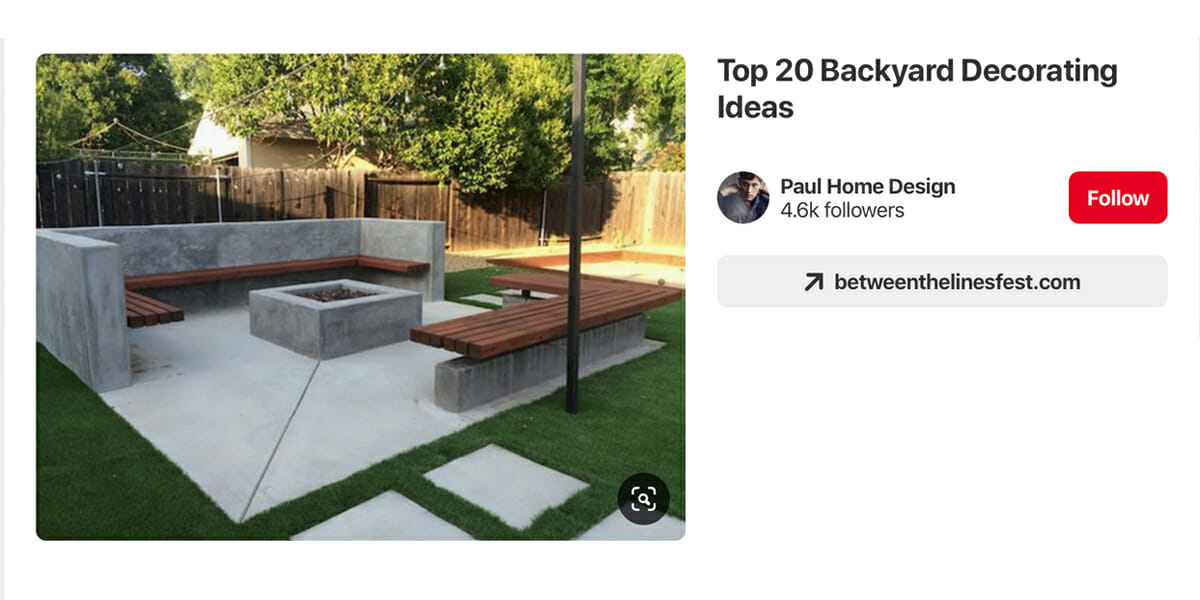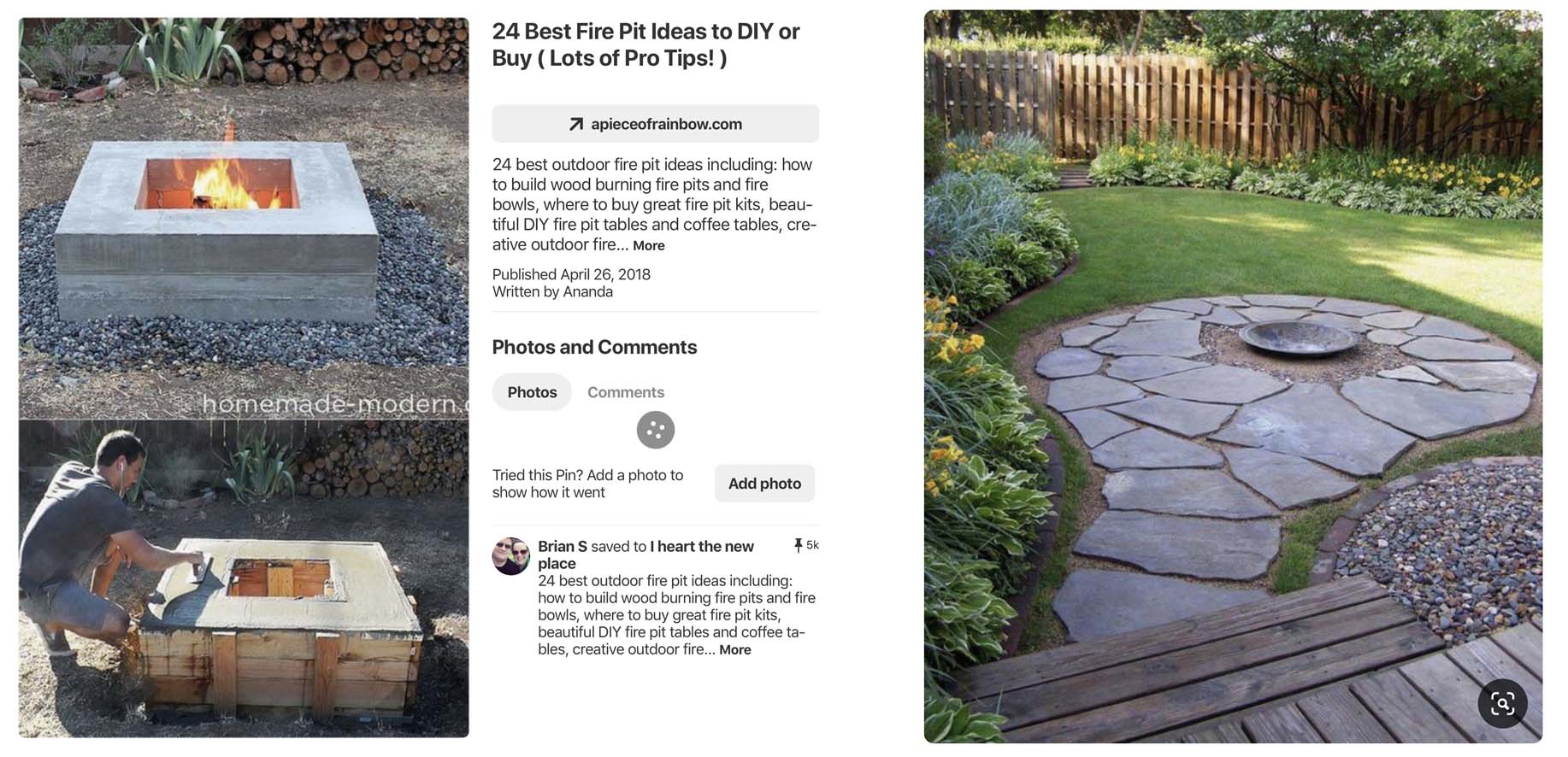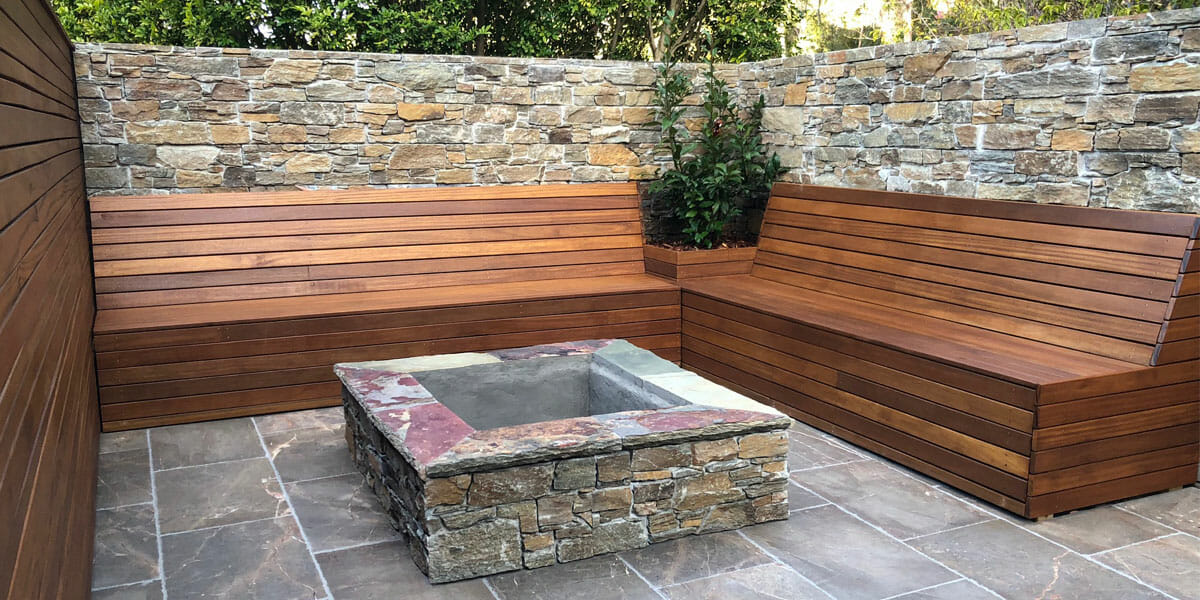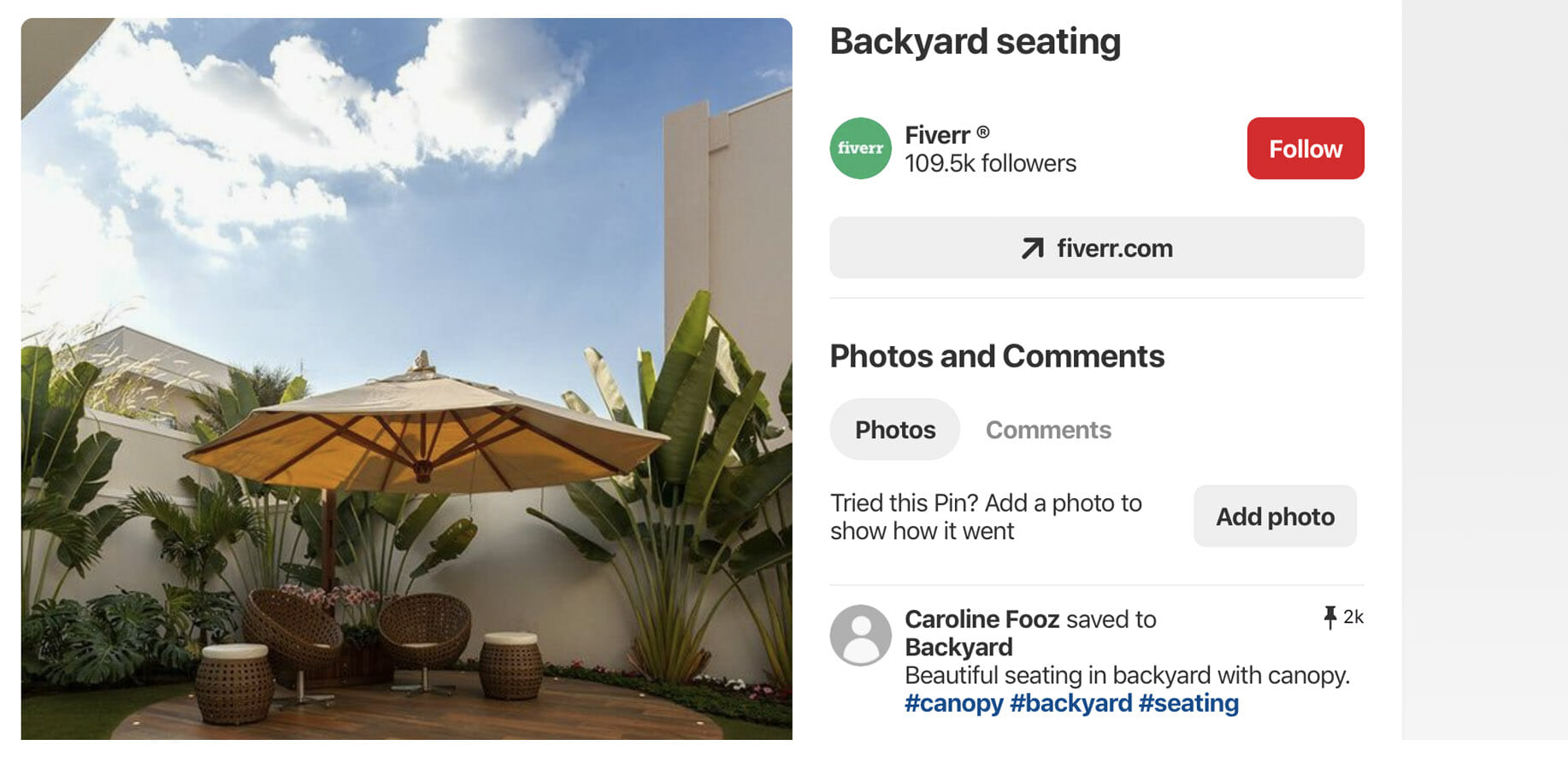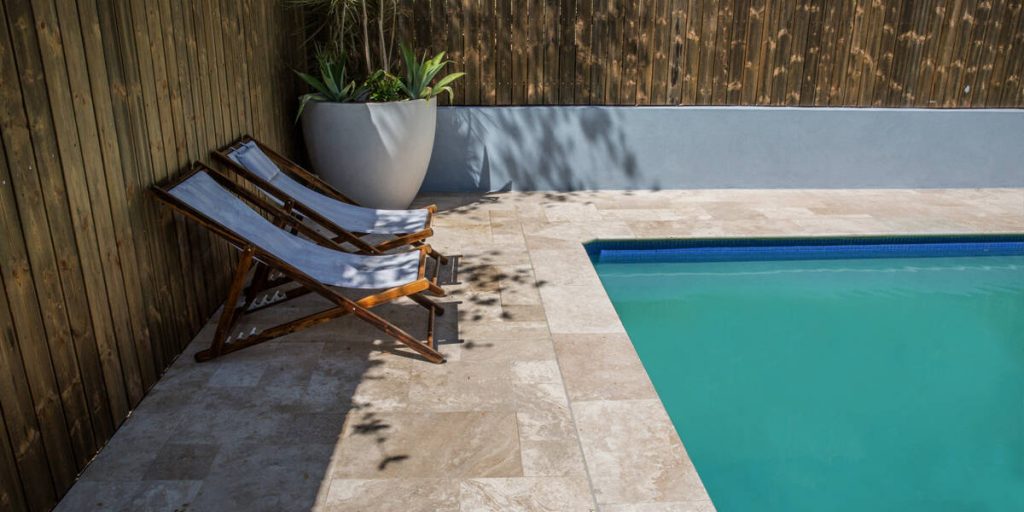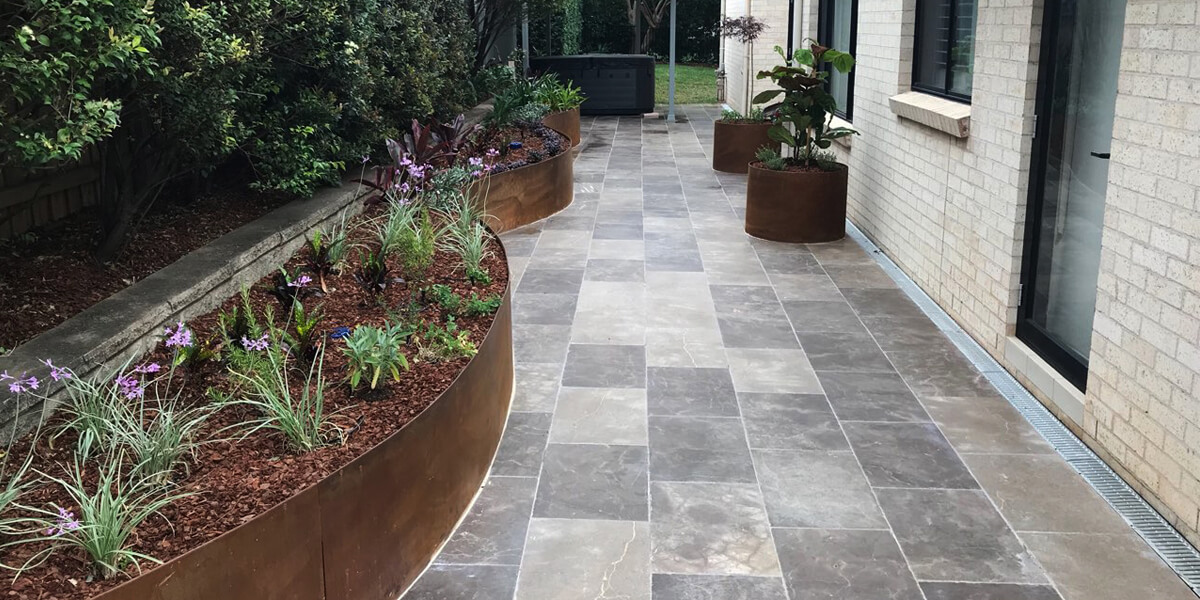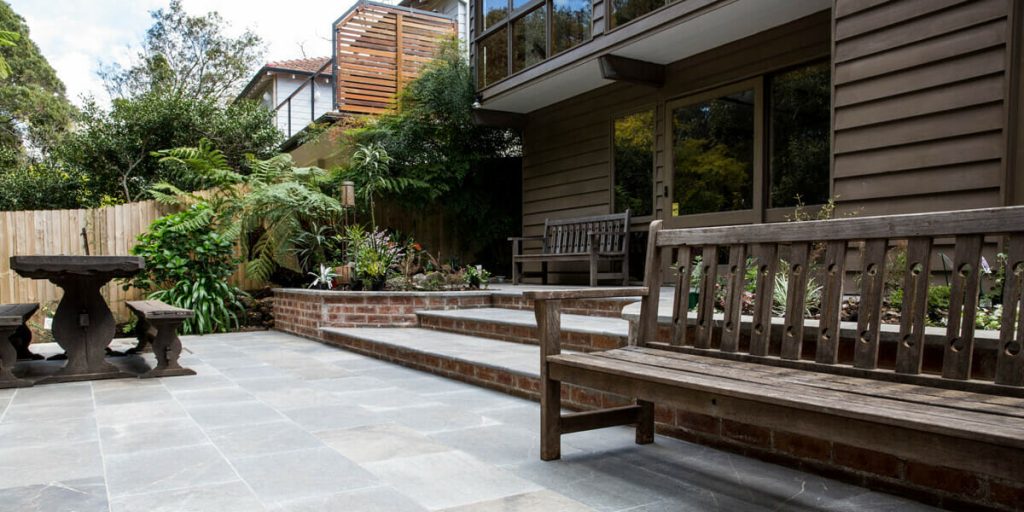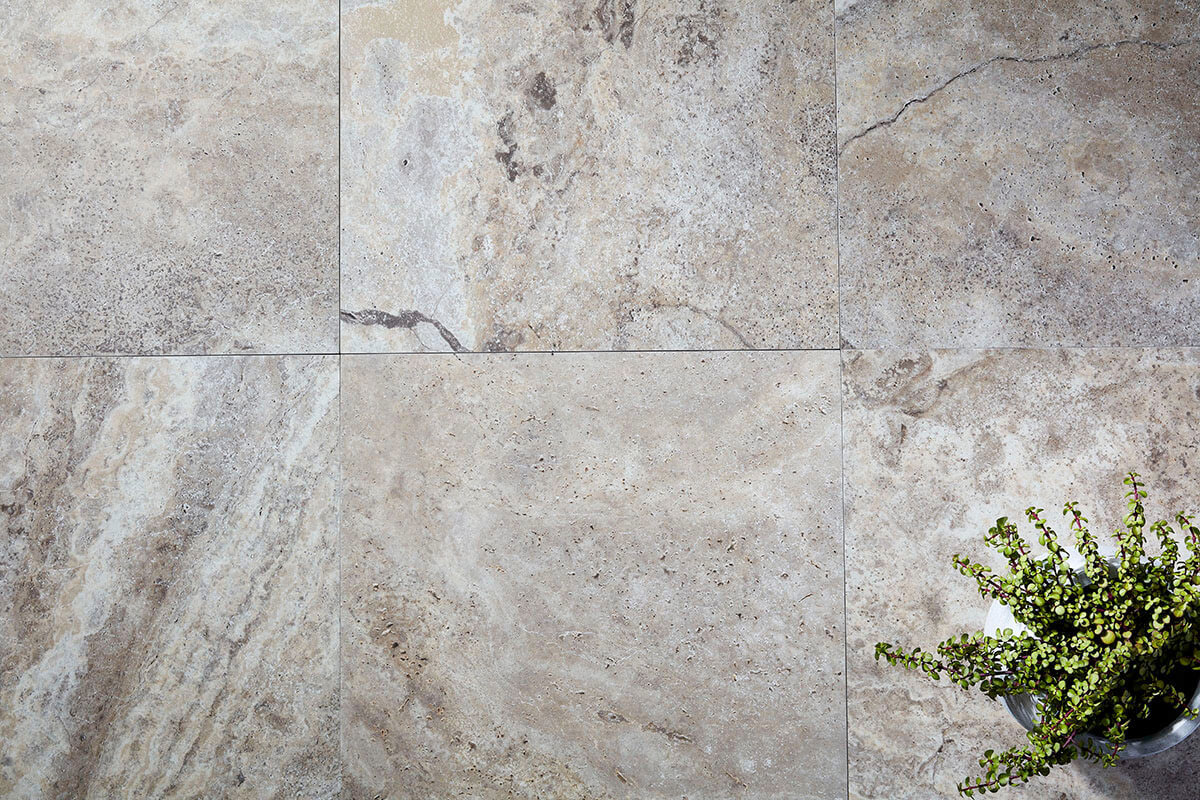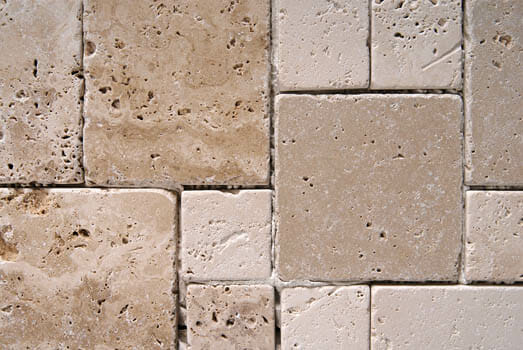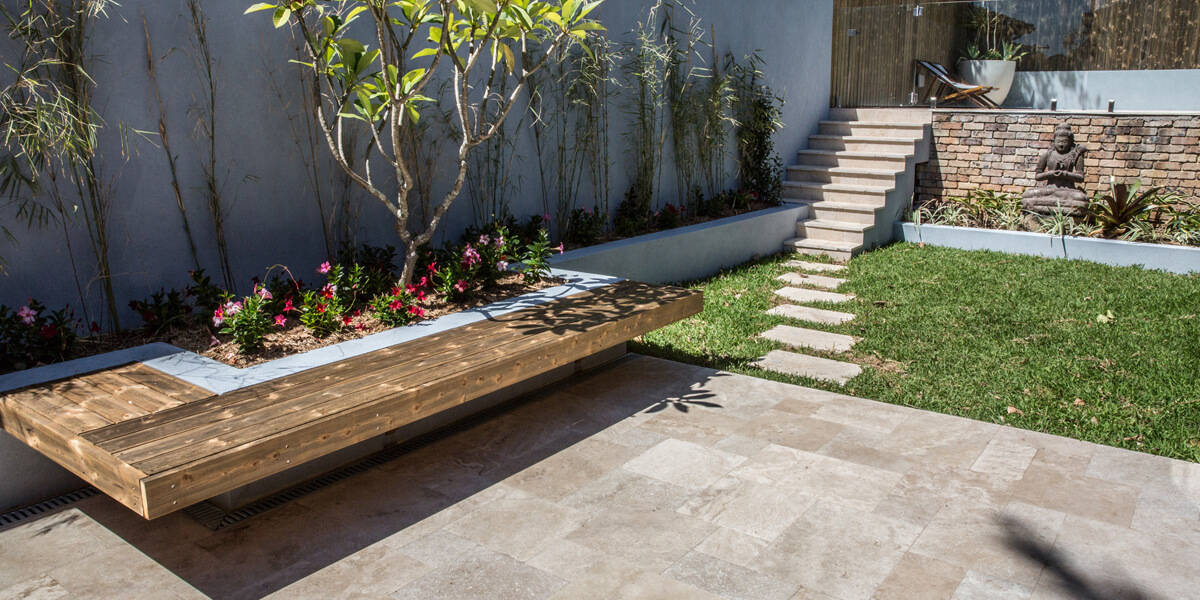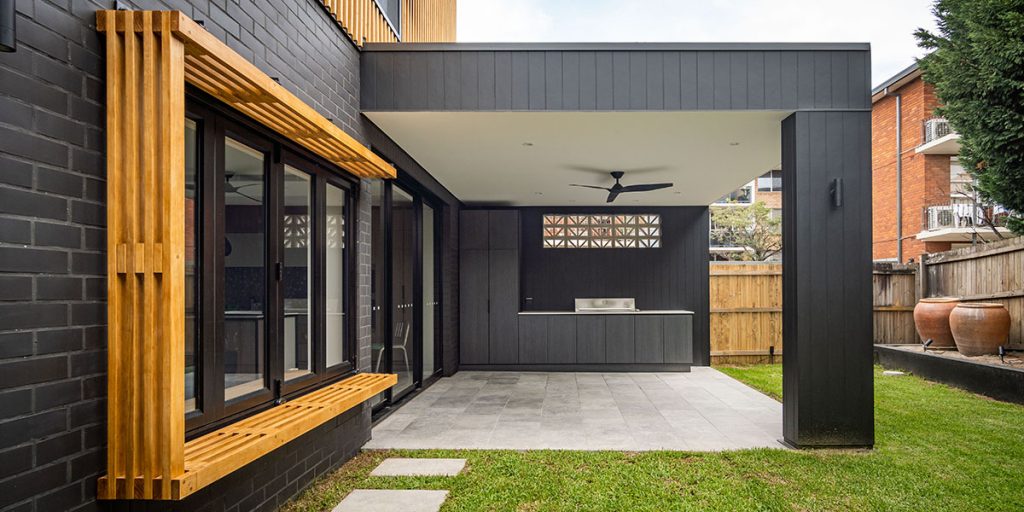
Limestones pavers have softer colour variations than most natural stone.
They also have less veining and a chalky feel about them.
Each piece of limestone has a story behind its beautiful aged look.
And makes an excellent paver for your home, outdoor entertainment area or poolside.
In this article, we will answer a few important questions about limestone pavers to help you make the right choice.
Let’s start with…
What are Limestone Pavers Made of?
Limestone is a sedimentary stone that is primarily composed of calcite and is formed by nature.
Compared to travertine and sandstone, limestone pavers are a very popular natural stone with Australians for outdoor usage.
While travertine is a stone with much character, its holes make it look quite busy.
And though sandstone is a desirable paver, it’s very porous.
Which is not ideal for outdoor usage due to it attracting mould and discolouring over time.
So if you are searching for an exclusive and unique paver for your outdoor entertainment areas and pool surroundings.
Limestone pavers are an excellent choice.
Do Limestone Pavers Stain Easily?
We have noticed a common trend from customers when they visit our showroom:
They have mixed information about limestone pavers.
Many think limestone pavers are cheap, porous and stain very easily.
Whilst others have been told that limestone pavers are so durable that they are suitable for driveways.
So we want to make it clear once and for all:
The porosity, durability, suitability and cost of limestone pavers.
Are all dependent on the supplier and the quality of stone they stock.
For example, a fine limestone paver is not as durable as a bluestone paver or granite paver.
However, limestone pavers are much denser than your average travertine paver or sandstone paver.
On the other hand, while high-quality limestone pavers have great strength.
And are salt and slip tested to ensure they are suitable for installation around saltwater pools.
They are not ideal for installation in heavy traffic areas like driveways.
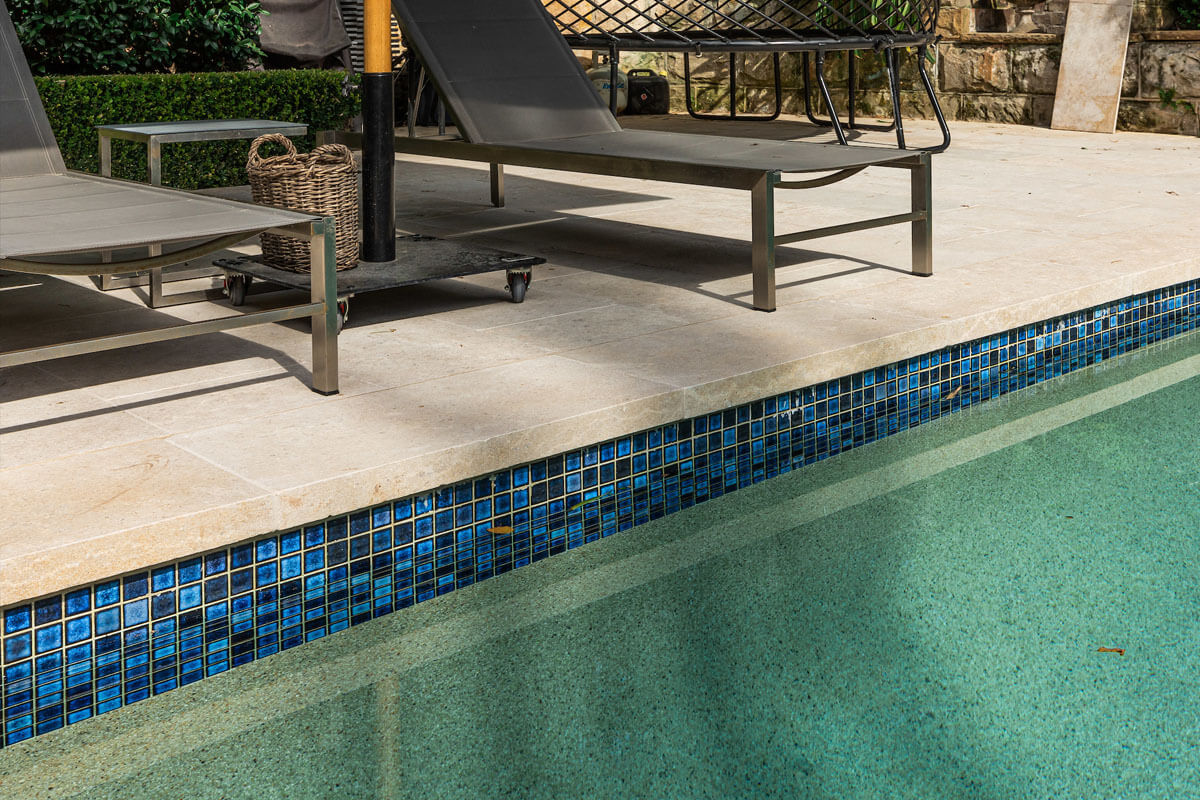
How Much are Limestone Pavers?
Like all natural stones, quality limestone pavers add value to your home.
So even though they are a higher investment now.
iIf you look at it from a long-term perspective, they’re worth every dollar.
Limestone pavers can vary in cost from $65 per/m2, all the way to $230 per/m2.
This variance in cost is not due to the limestone’s durability.
But rather the fossils and shells that have set in its formation.
This unique trait adds a lot of value to limestone pavers.
What Makes Some Limestone Pavers Superior to Others?
There are a few characteristics that distinguish a superior limestone paver from a less superior one.
These include:
- The stone’s density
- The colour of the stone and
- The cut of stone sold to the supplier.
In saying this, we urge you to be wary when investing in limestone pavers.
This is because some pavers on the market, even if they are 30mm thick.
Are actually quite porous and need to be dip-sealed to help make them less porous.
In such cases, you may even need to seal all 6 sides of the stone to protect it.
Also, there are some very low-quality limestone pavers on the market.
They’re so porous and soft that installing them around a pool, especially a saltwater one, is not ideal.
The stone will simply crumble over time and cost you even more time and money to fix.
This is why investing in the right quality stone for the area you intend to install it in, is very, very important.
If you need any help with this, reach out to our team of experts for some guidance here.
Limestone Pavers Around the Pool?
If the particular limestone is carefully selected and adequately tested.
Limestone pavers can have up to double strength and durability compared to their sister paver, travertine.
As such, limestone pavers can be installed around the pool.
However, we will caution you to salt test your limestone pavers before actually investing or installing them as pool coping pavers.
We have seen limestone pavers installed in various locations around the pool including pool houses and pool surroundings.
They’re also perfect as walkway pavers and for patios, courtyards and basically anywhere else you can imagine.
What’s the Best Limestone Paver Pattern?
The French pattern is the most desired pattern for tumbled limestone pavers.
Basically a French pattern consists of four different sized pavers, that form a pattern which repeats itself.
The sizes include 600×400, 400×400, 400×200 and 200×200. Below is an example of this pattern.
In terms of design trends with limestone pool coping
Bullnose coping pieces are used in traditional homes or for curvy pools.
While square edge or drop edge limestone coping is used for modern contemporary homes.
See image below:
Do Limestone Pavers Get Hot?
Compared to granite and bluestone, limestone pavers reflect heat.
As they are made of calcite, this element does not absorb heat.
And as such, limestone pavers are an excellent choice as a poolside paver.
This is because they do not get hot underfoot.
And in the harsh Australian climate.
Where temperatures can reach 40 degrees celsius and higher.
This is a helpful characteristic for a poolside paver.
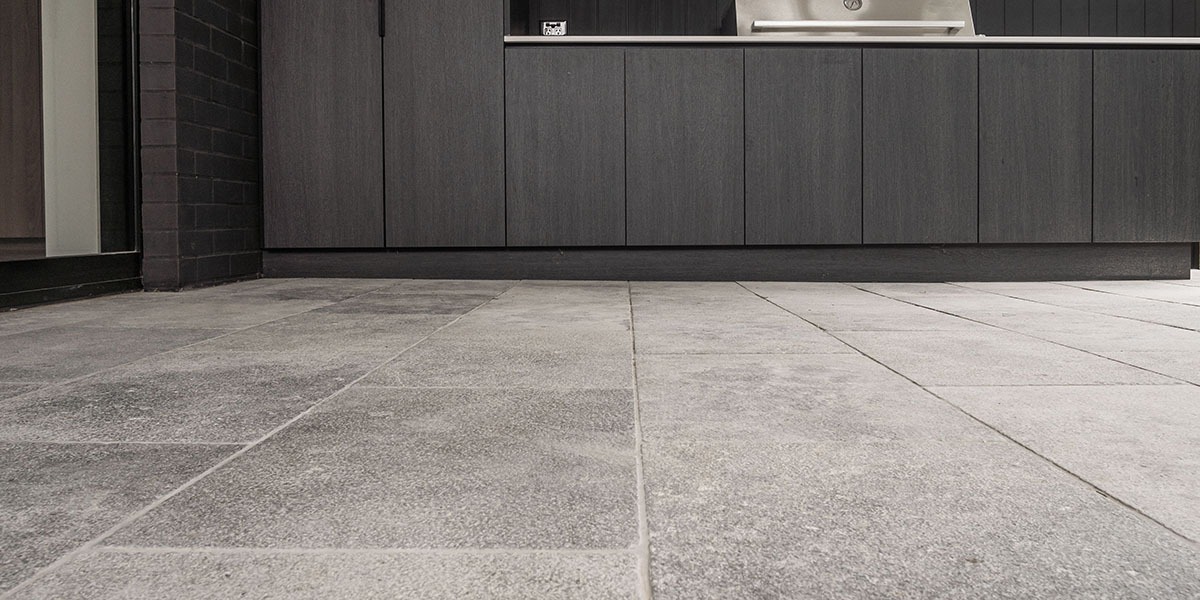
Along with heat-resistance.
You also want to ensure that the limestone you purchase for your poolside, is slip-resistant.
Ideally, you want to invest in a poolside paver that has a slip rating of P4 or higher.
To make sure, always ask your supplier to send you a slip rating test of the stone prior to purchase!
Do You Need to Seal Limestone Pavers?
As with all natural stone products, sealing is essential to maintain the stone’s aesthetic and longevity.
Limestone pavers are no exception to this.
Aqua Mix – Sealers Choice Gold is our recommended sealer for limestone as it keeps the stone’s natural appearance intact.
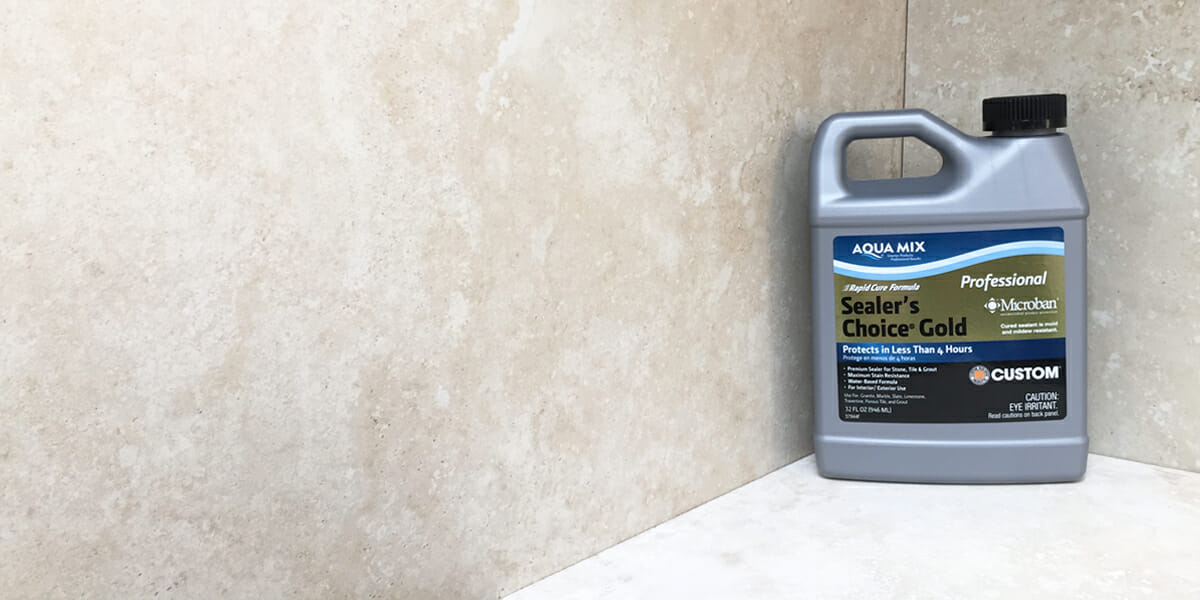
Aqua Mix® Sealer’s Choice® Gold – Rapid Cure, which contains MicroBan®, is the world leader in antimicrobial chemistry.
This sealer is able to penetrate through denser stones with smaller pores.
It also has a Low VOC (Low Volatile Organic Compound).
Which means it emits less carbon into the atmosphere.
For example, Aqua Mix only emits 46 grams of carbon per litre of sealant.
Which in the scope of things, is a very small amount of carbon pollution.
Aqua Mix Sealers and Cleaners have been used on limestone pavers globally in different environments for over 20 years.
Compared to other sealants, they are more long-wearing.
Which means you get the most bang for your buck from the product.
Conclusion
Choosing the right limestone paver will add a wealth of beauty, class, longevity and functionality to your home.
However, paving your home and surroundings is a significant investment and as such, should be one that stands the test of time.
This is why prior to investing in any natural stone pavers, it’s important to always do your research.
As we’ve mentioned earlier, the quality of a natural stone can vary between each supplier.
This is why it’s important to review the tests conducted on each stone.
And see if this information makes limestone paving an appropriate choice for your area of choice.
It’s easy to be led astray in this industry, especially when so few suppliers actually know their products.
If you’d like some guidance with your research or to chat about a specific product, you’re welcome to reach out to us.
We love this stuff and would love to guide you make the best decision for your home.
